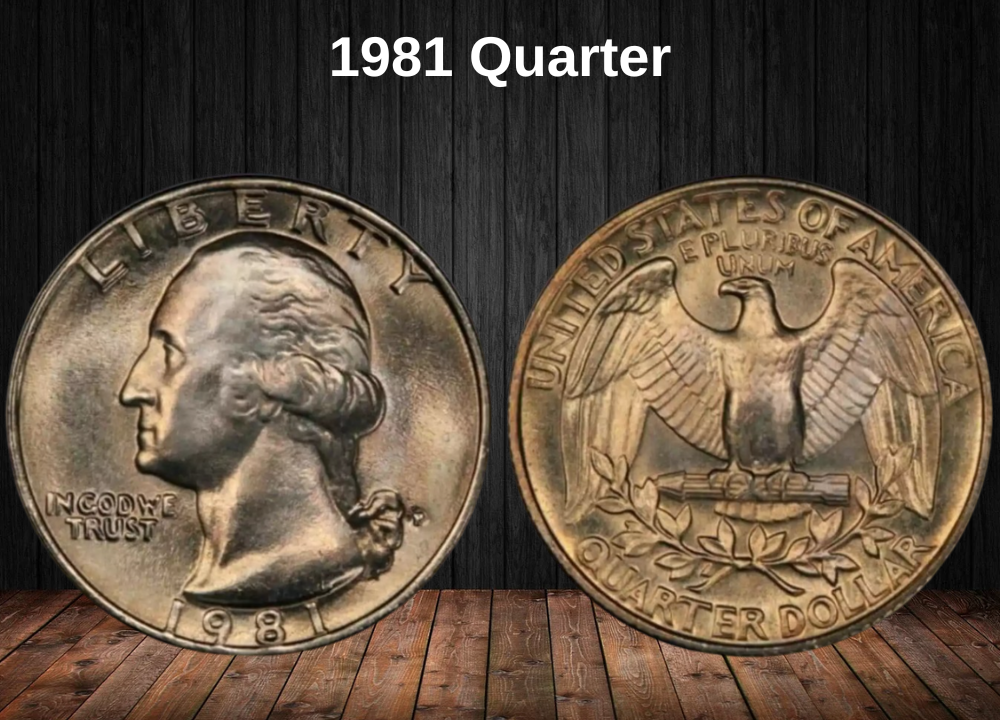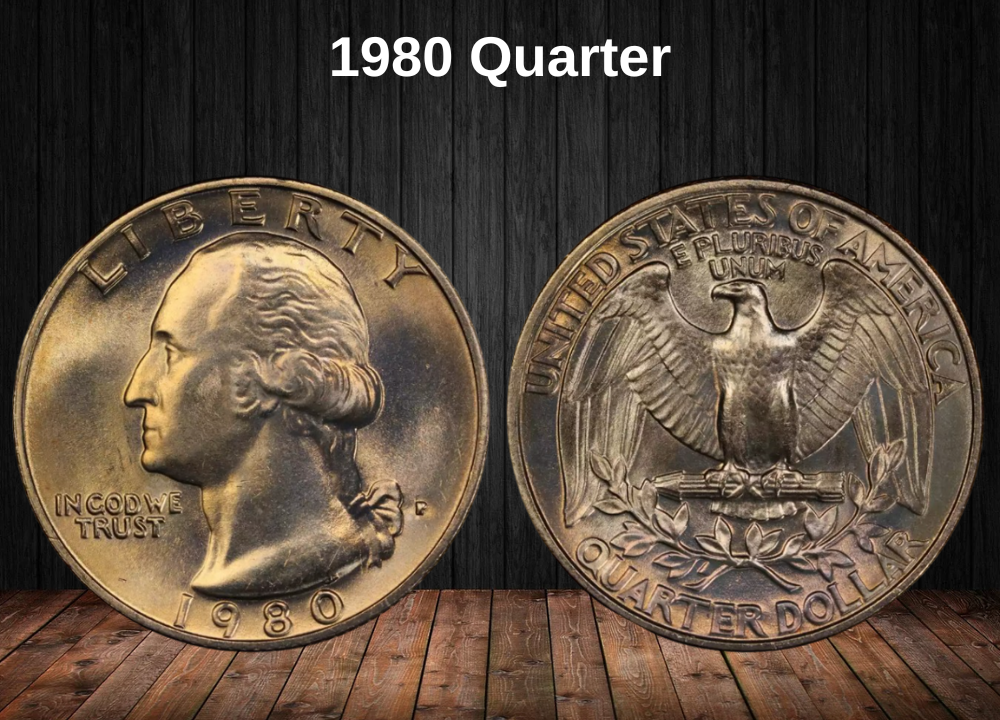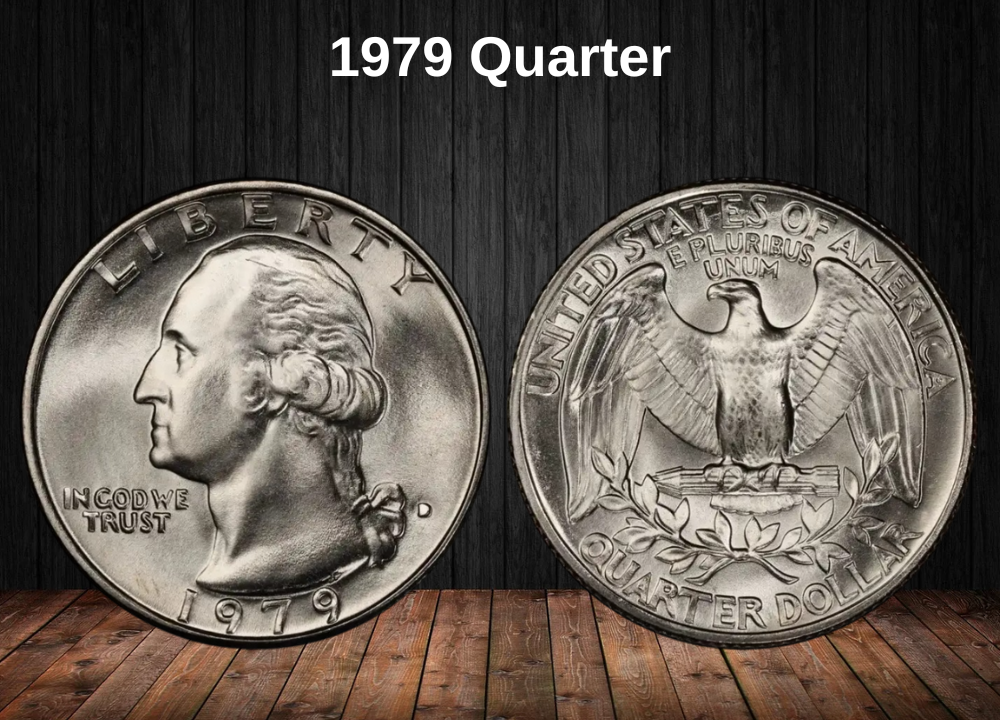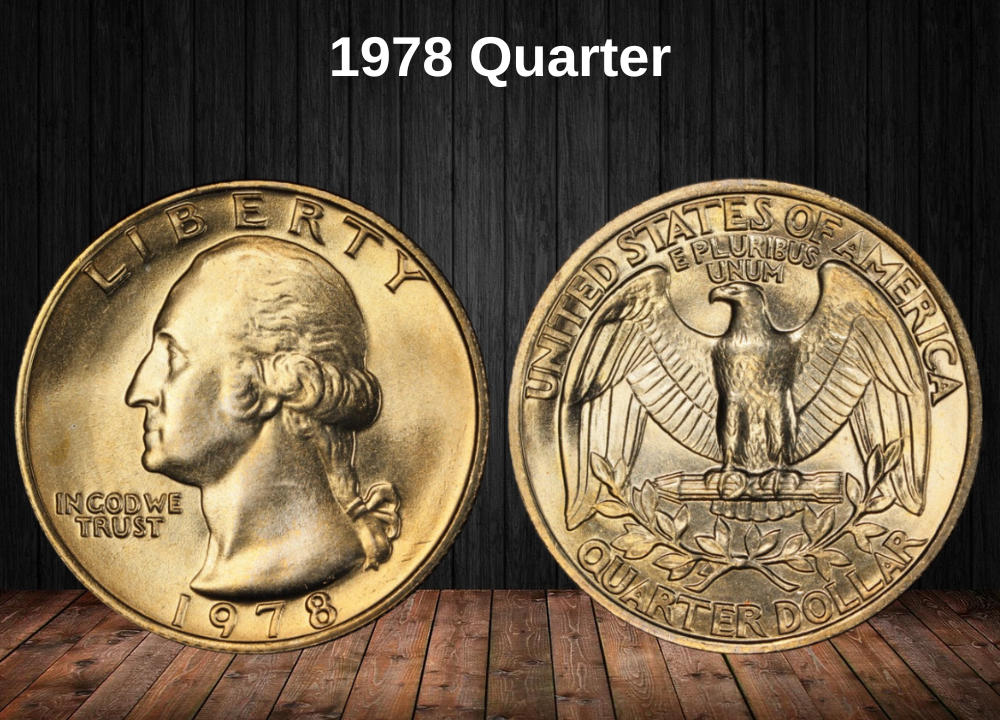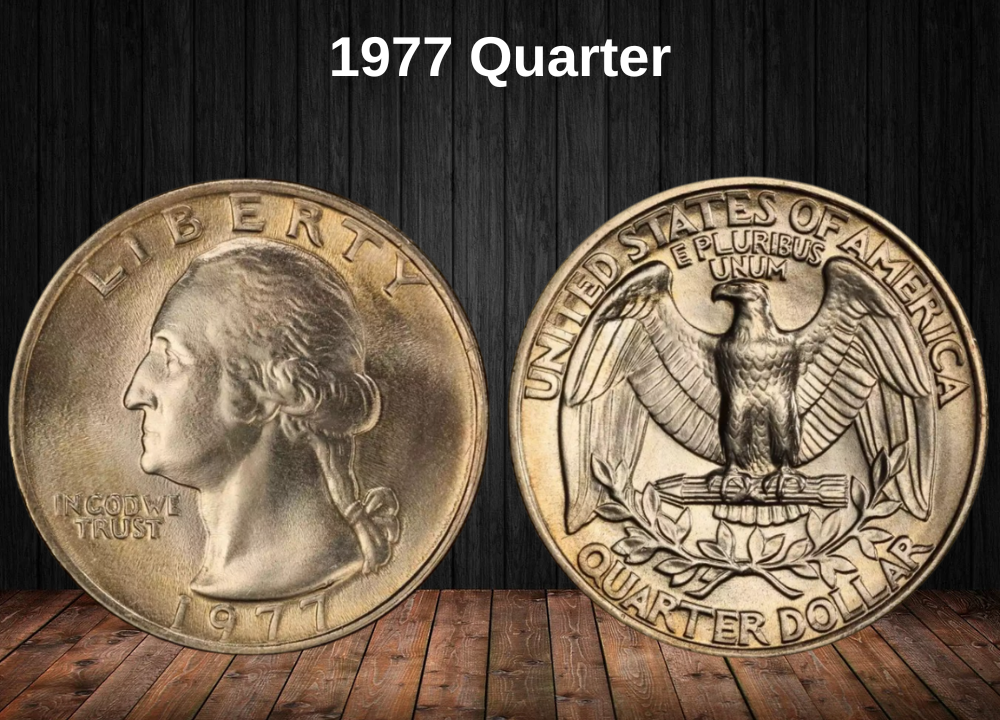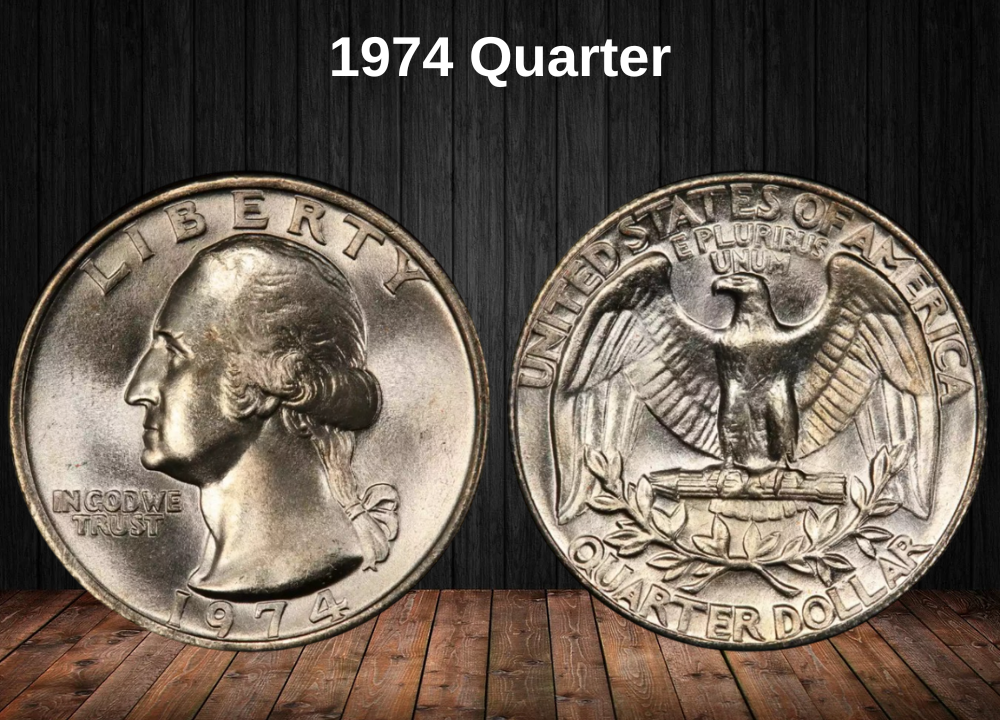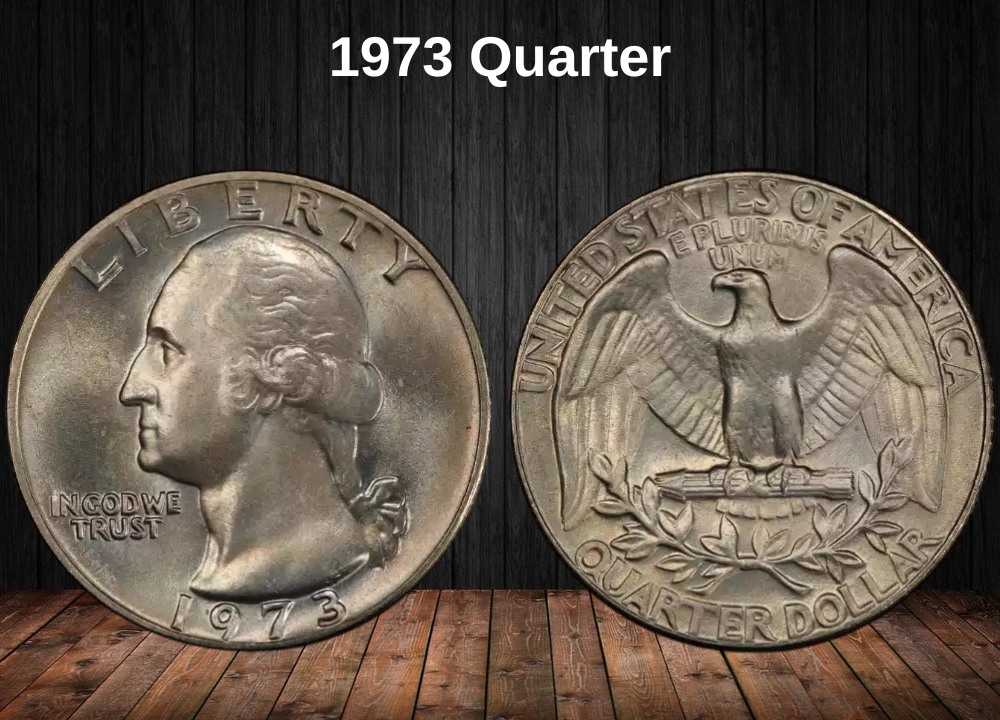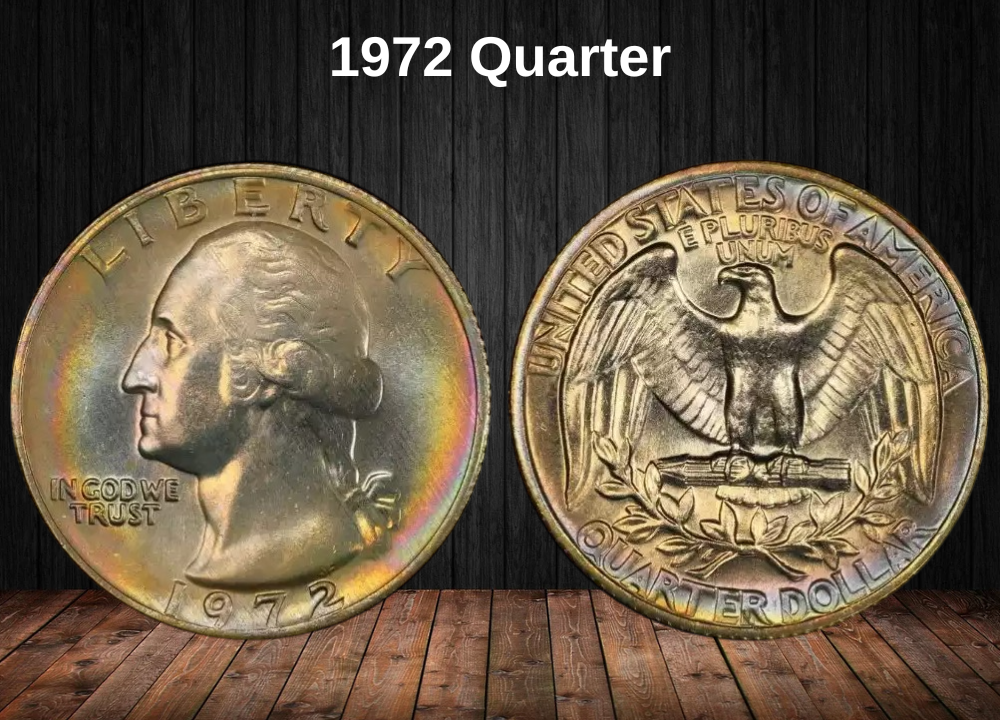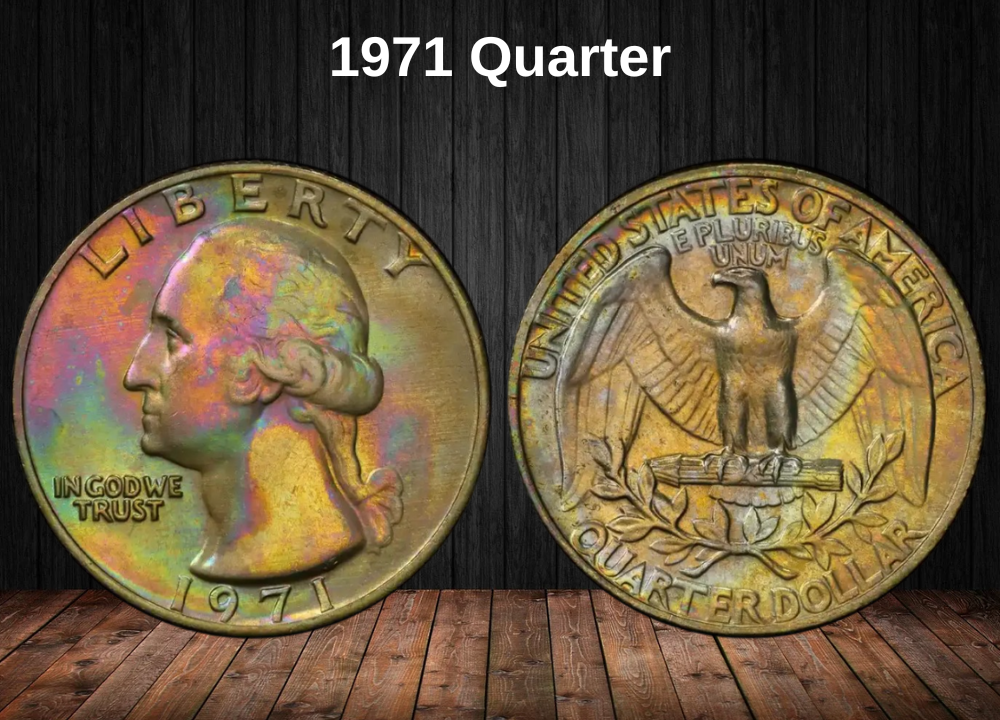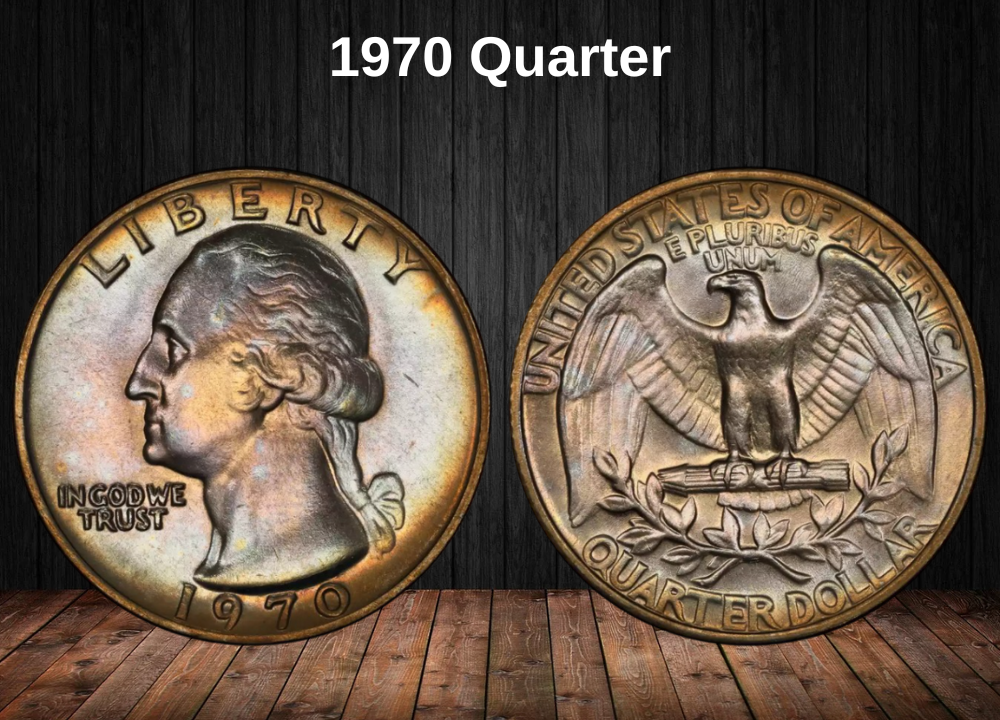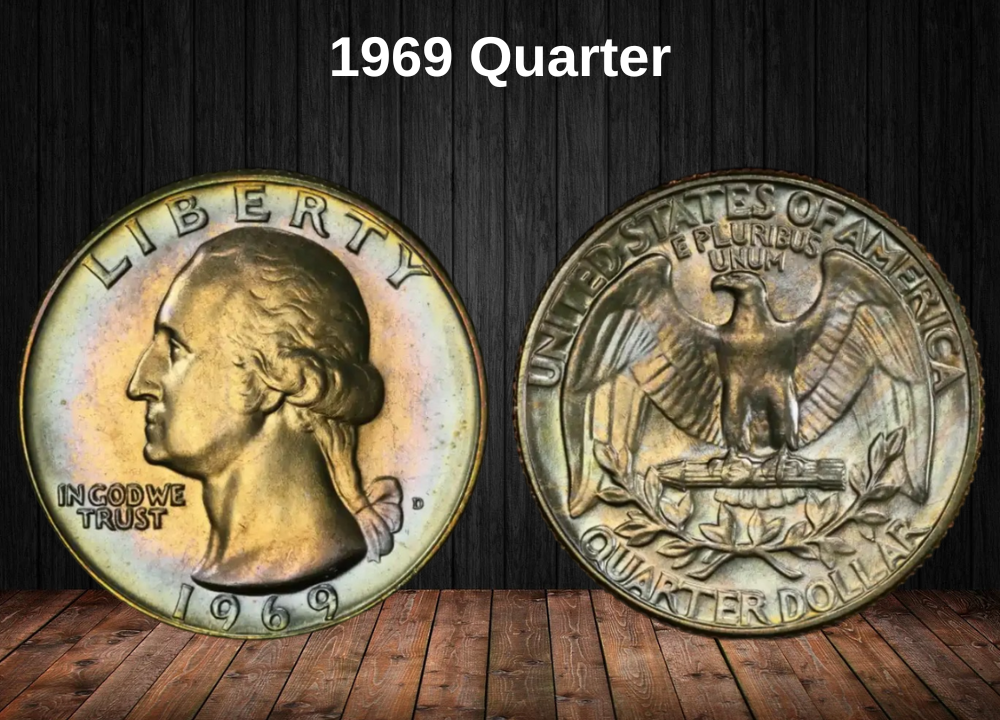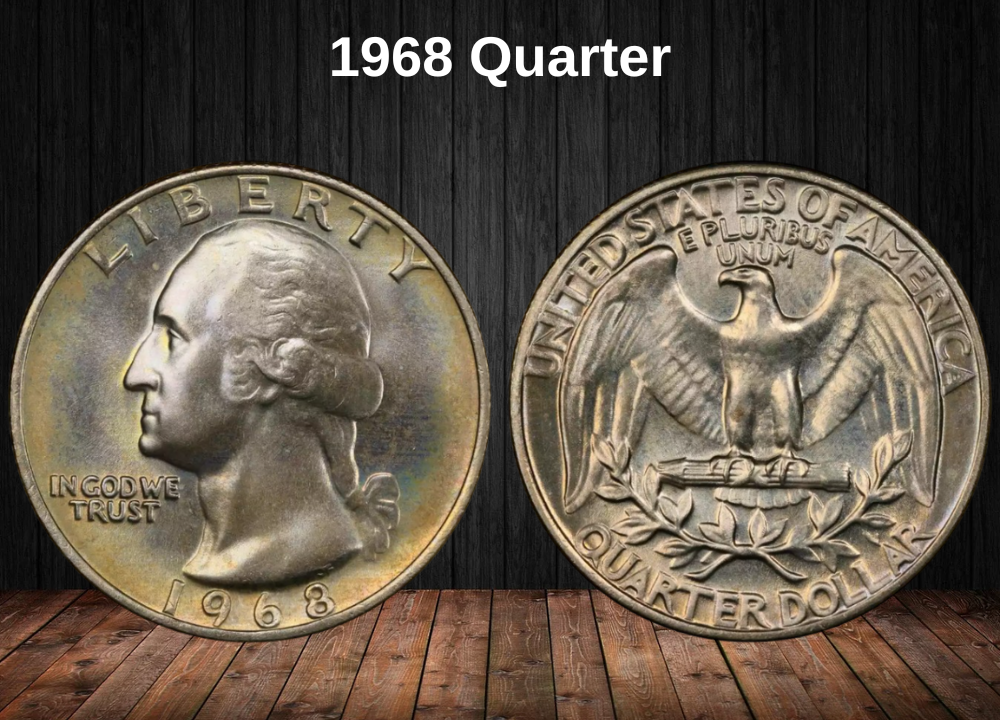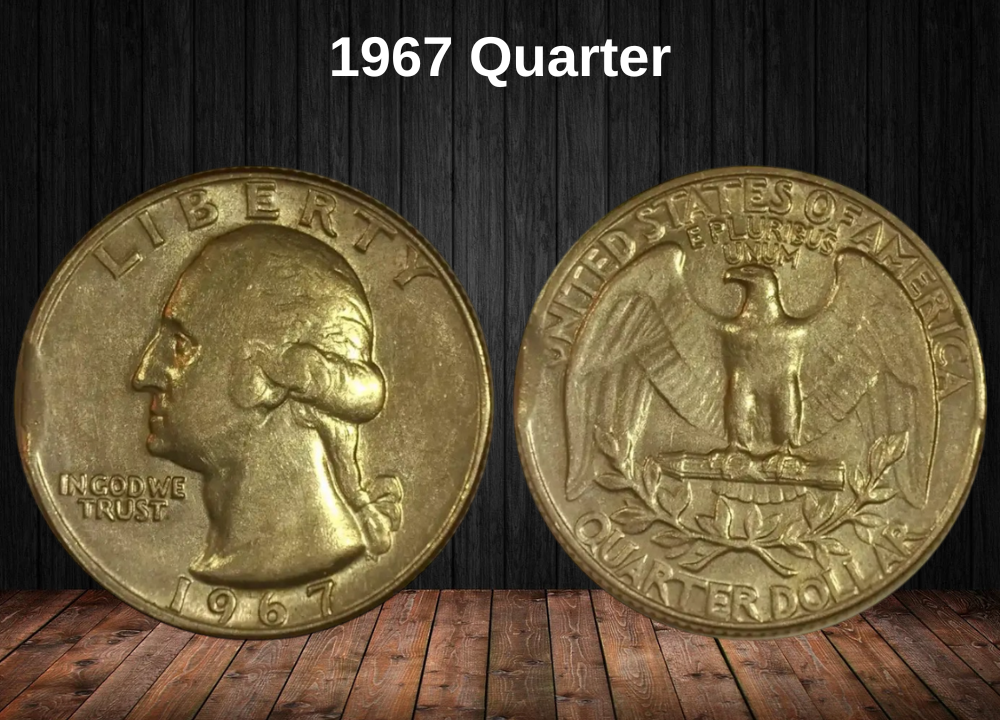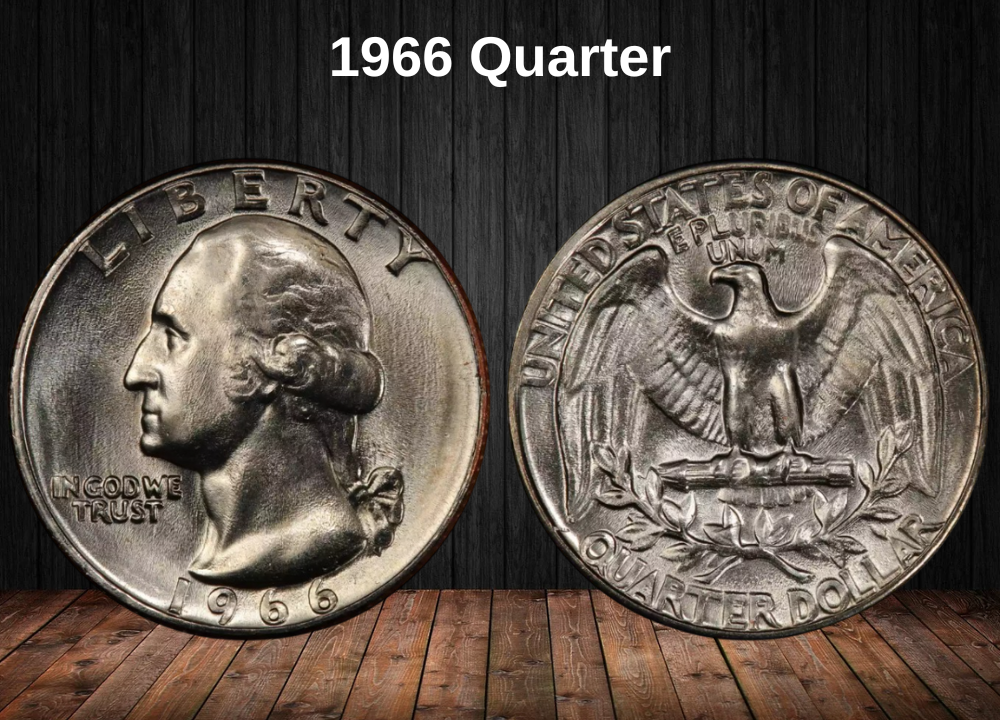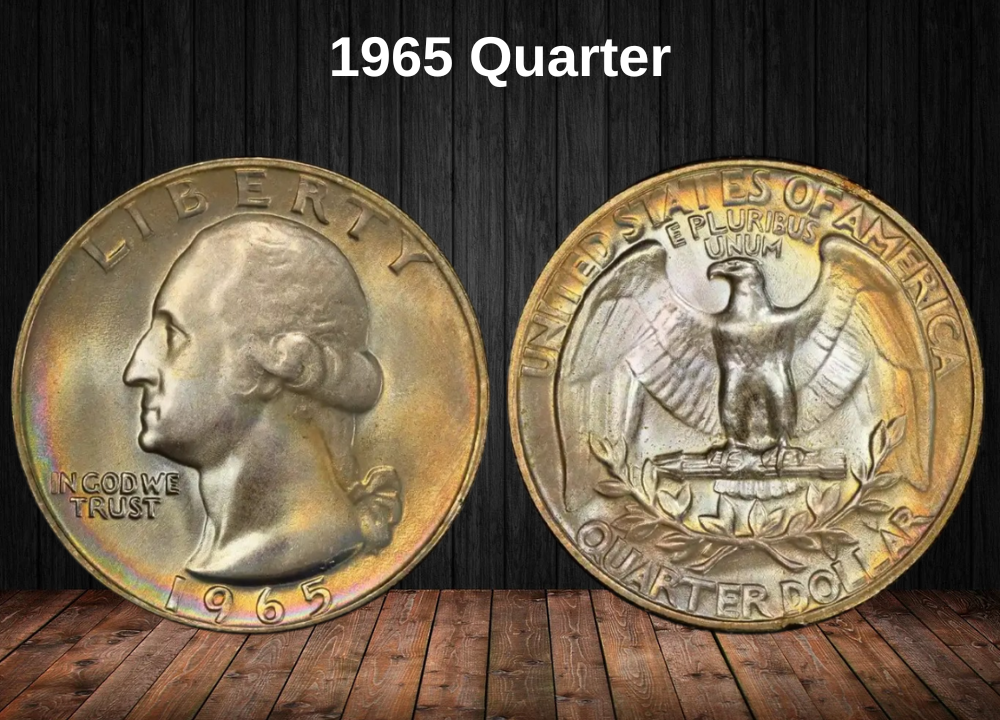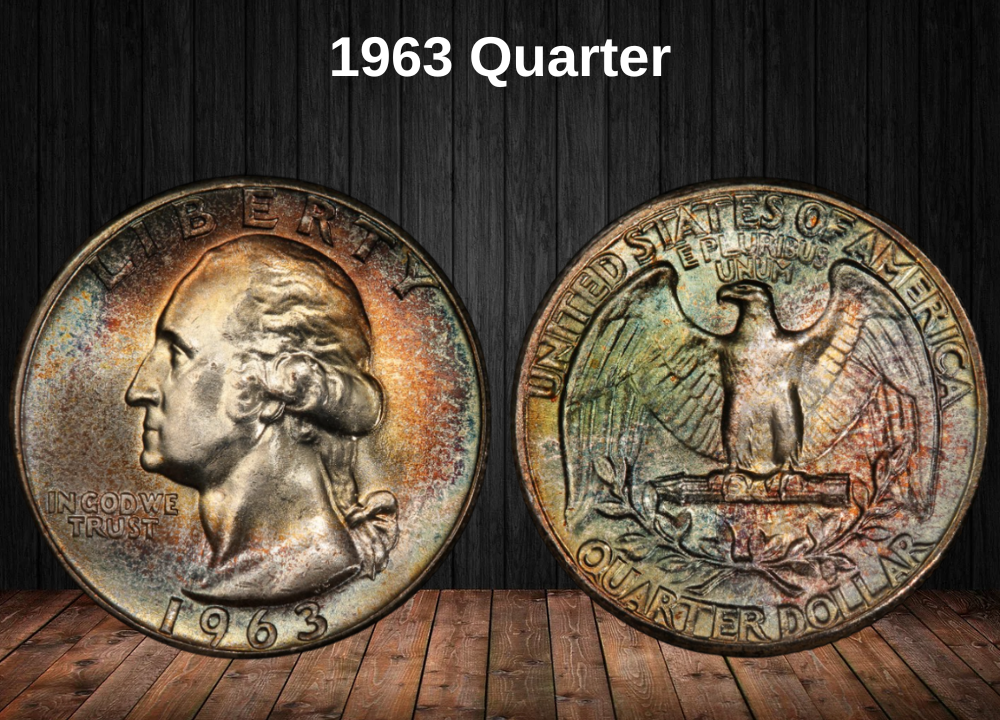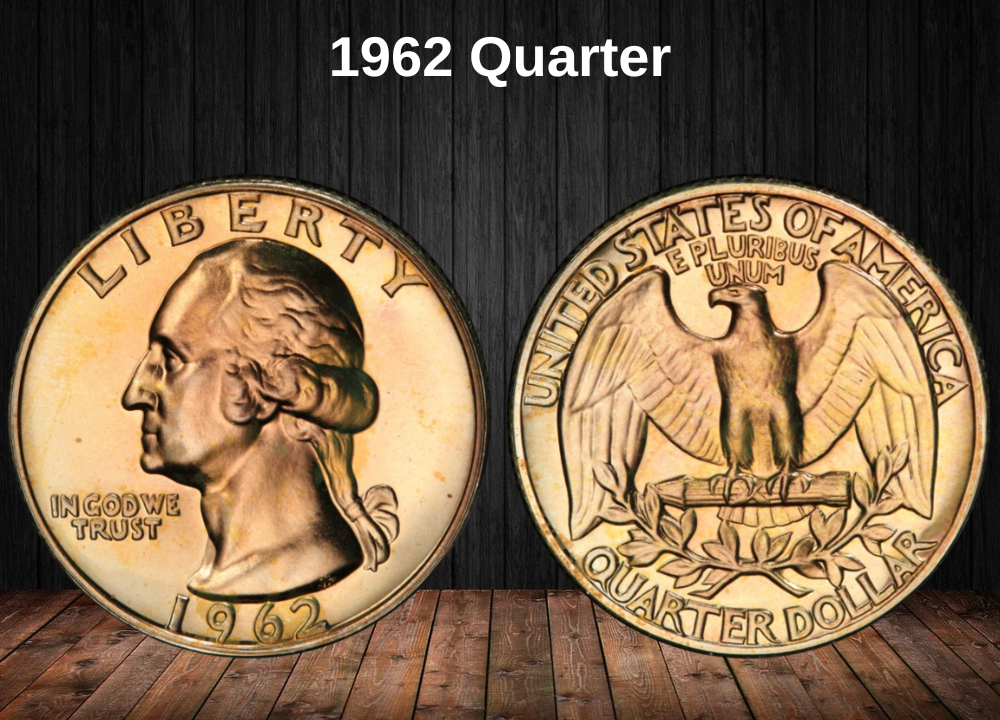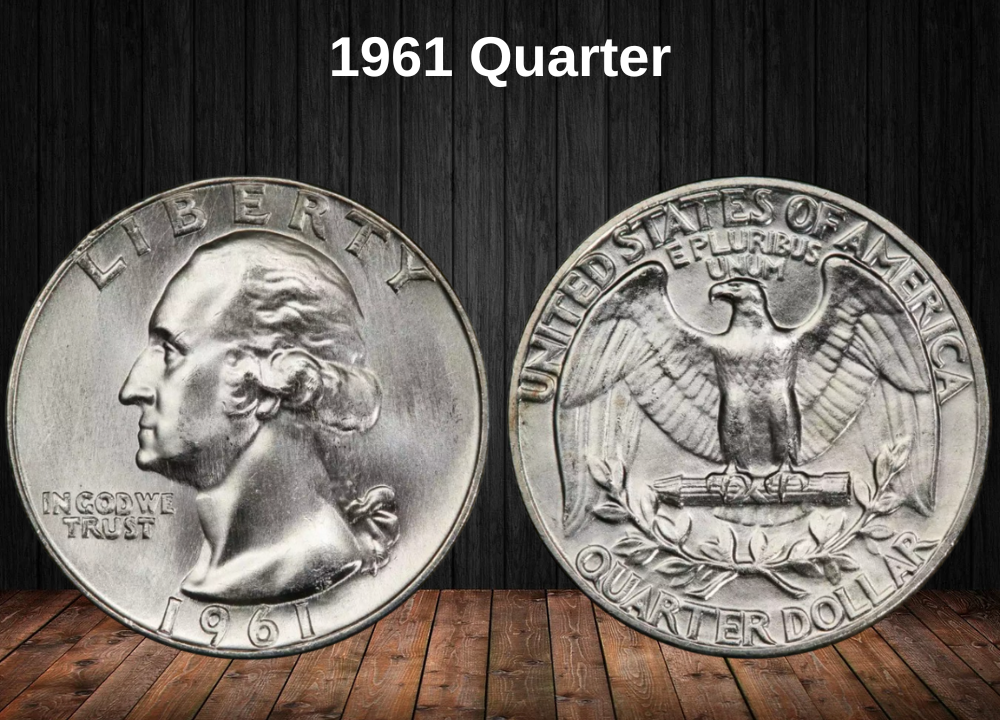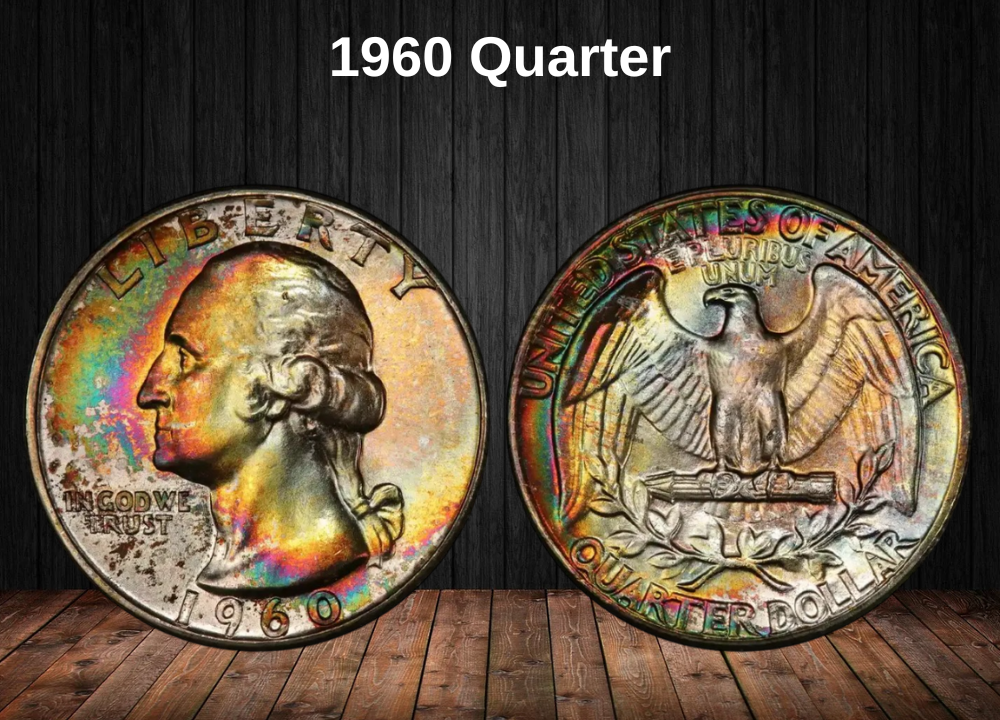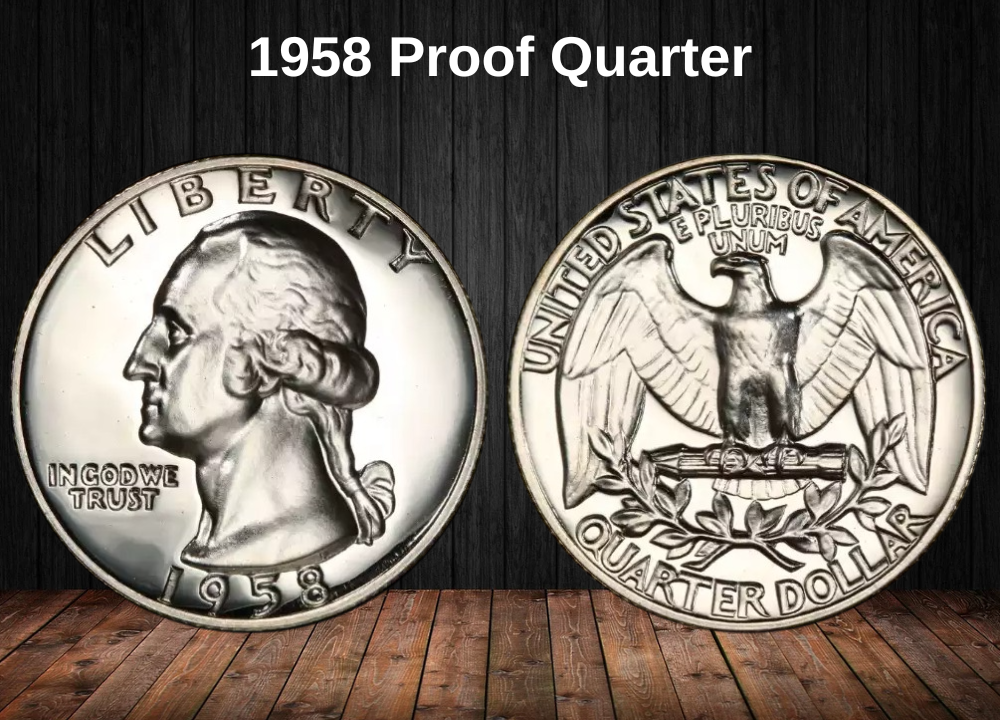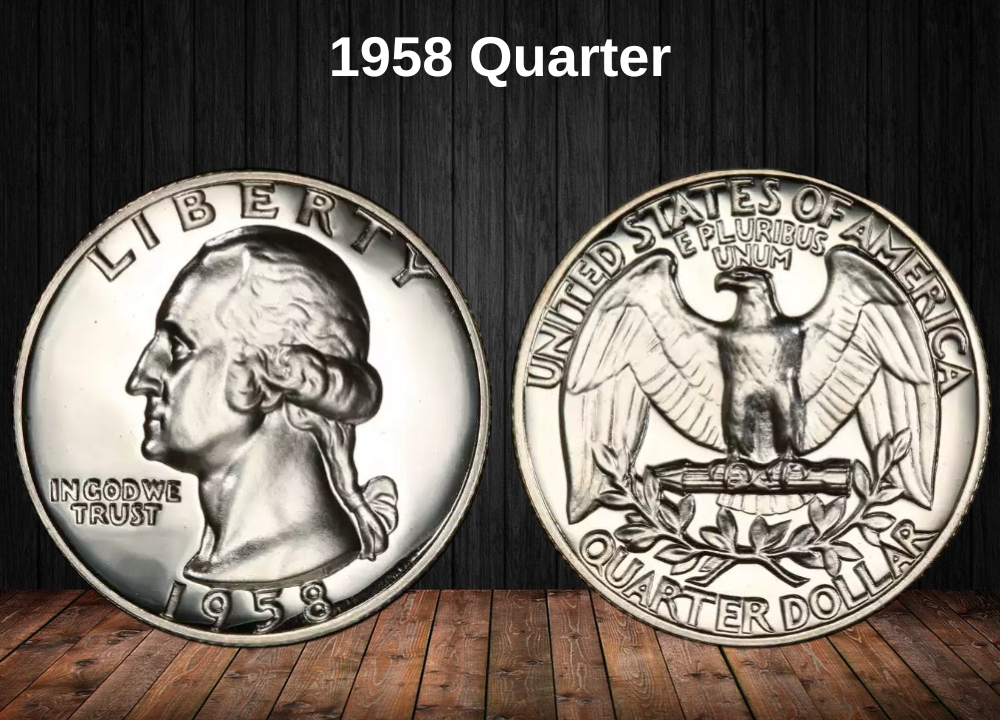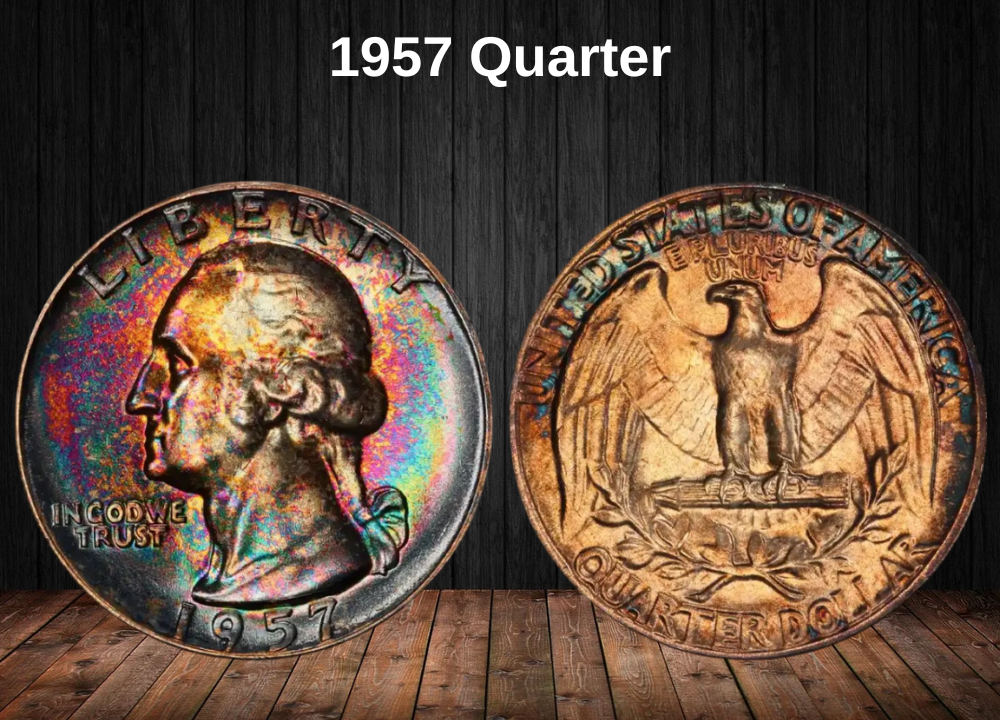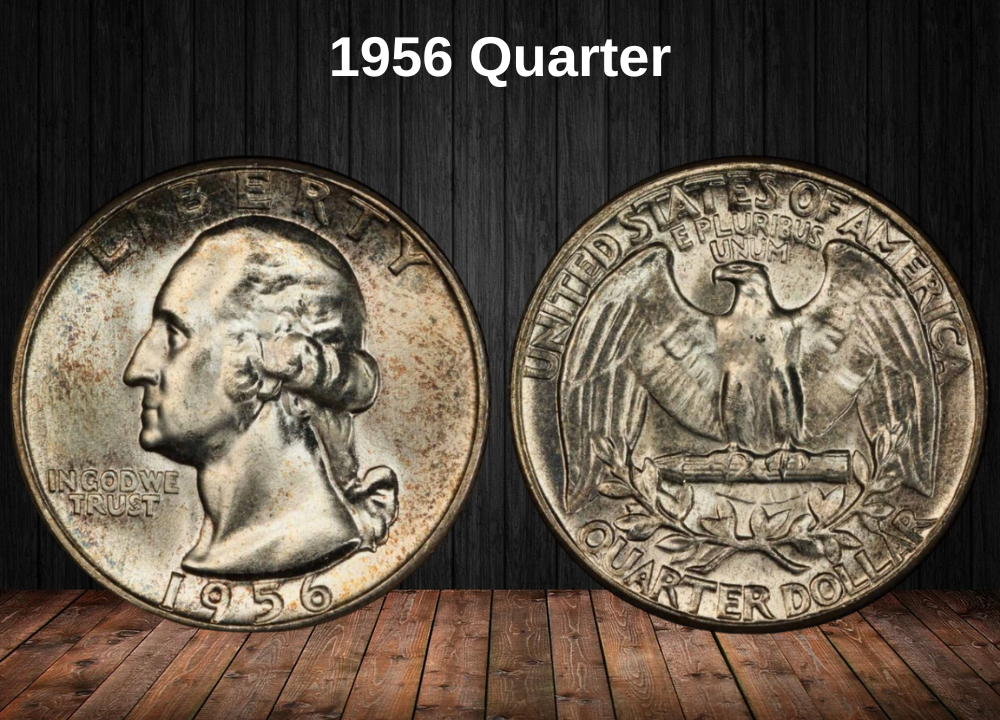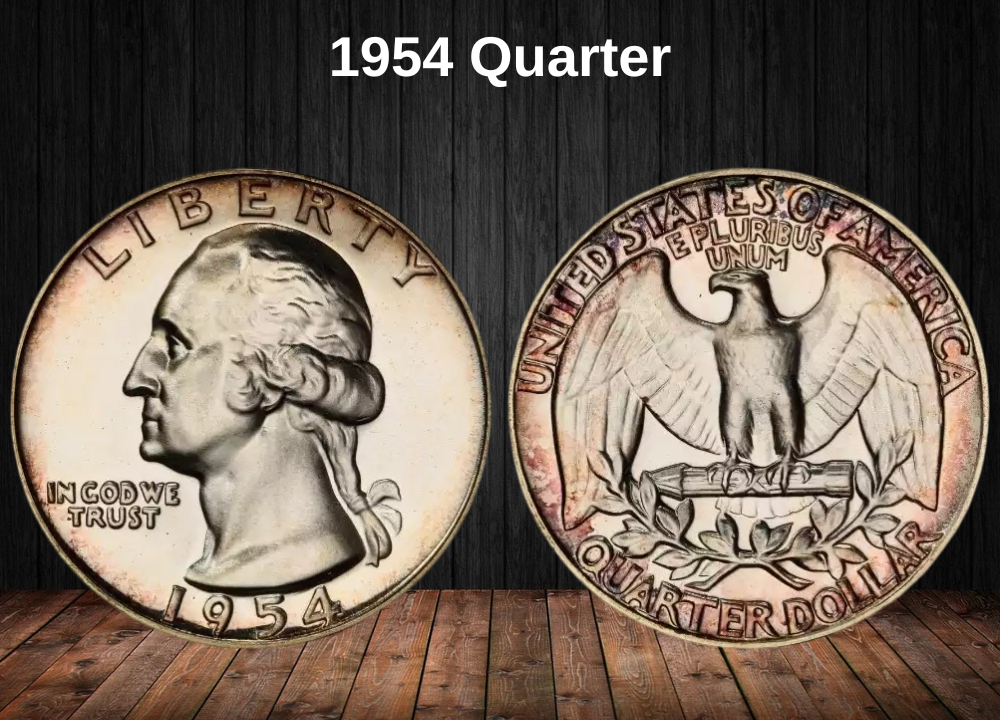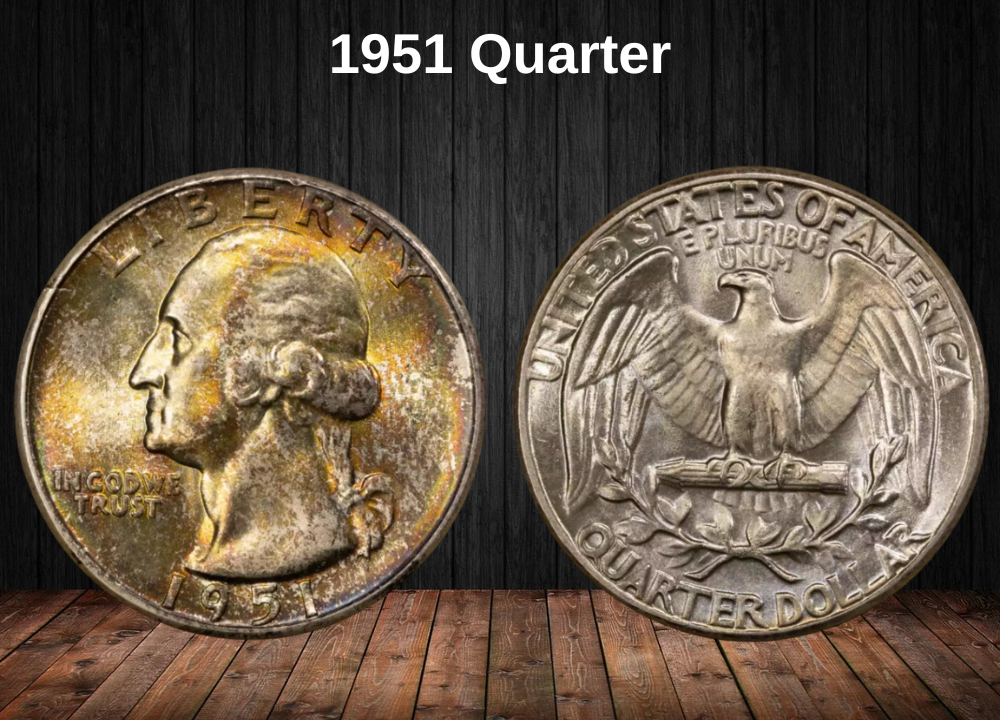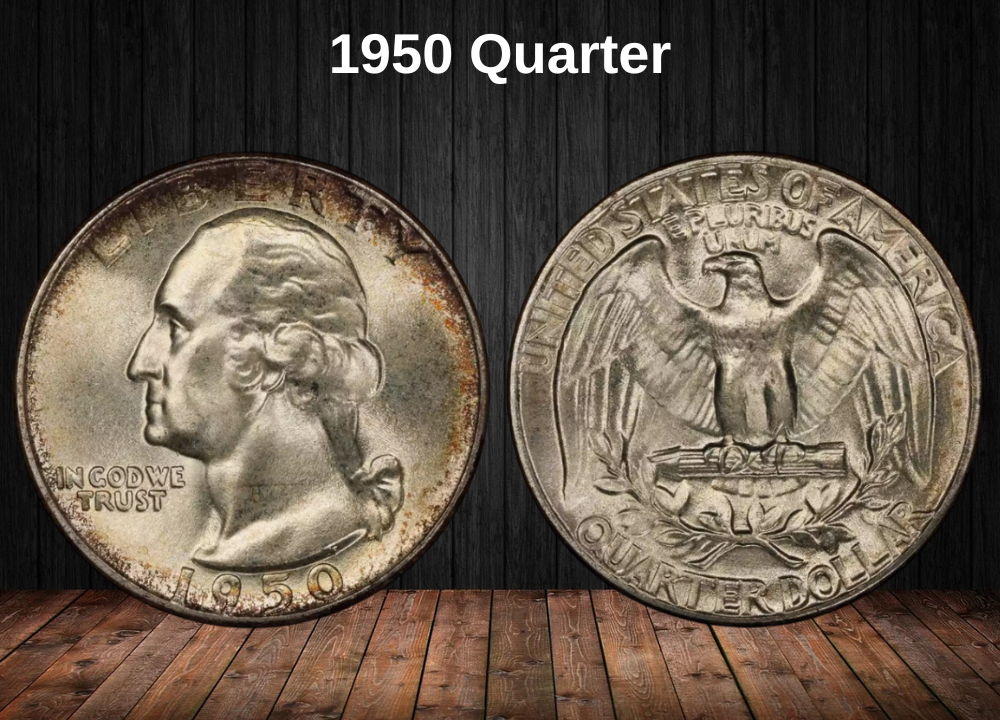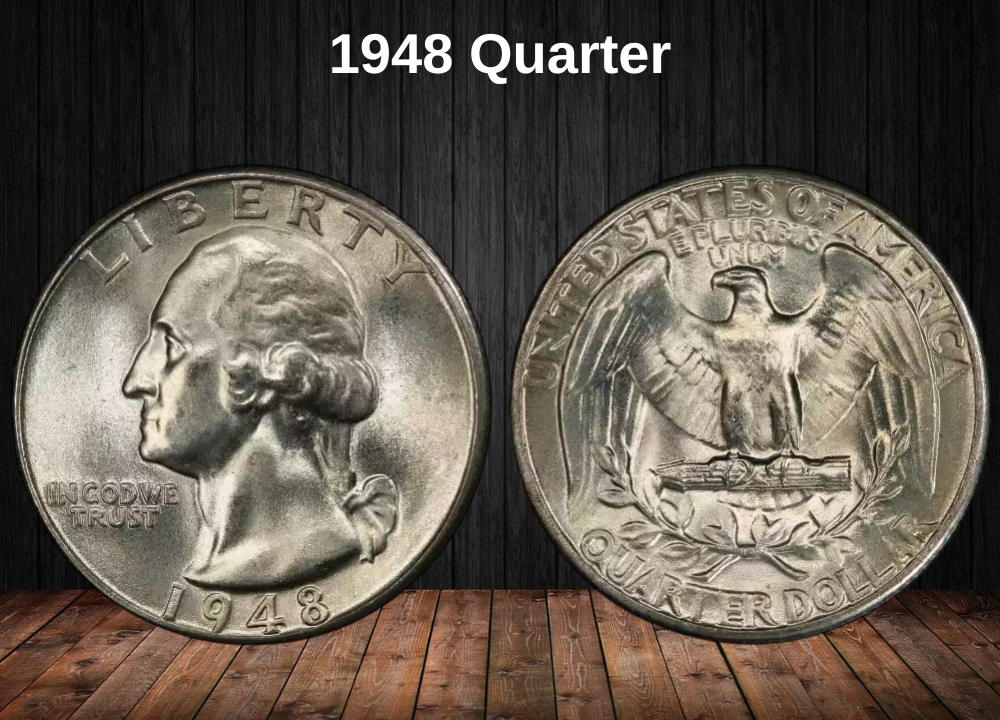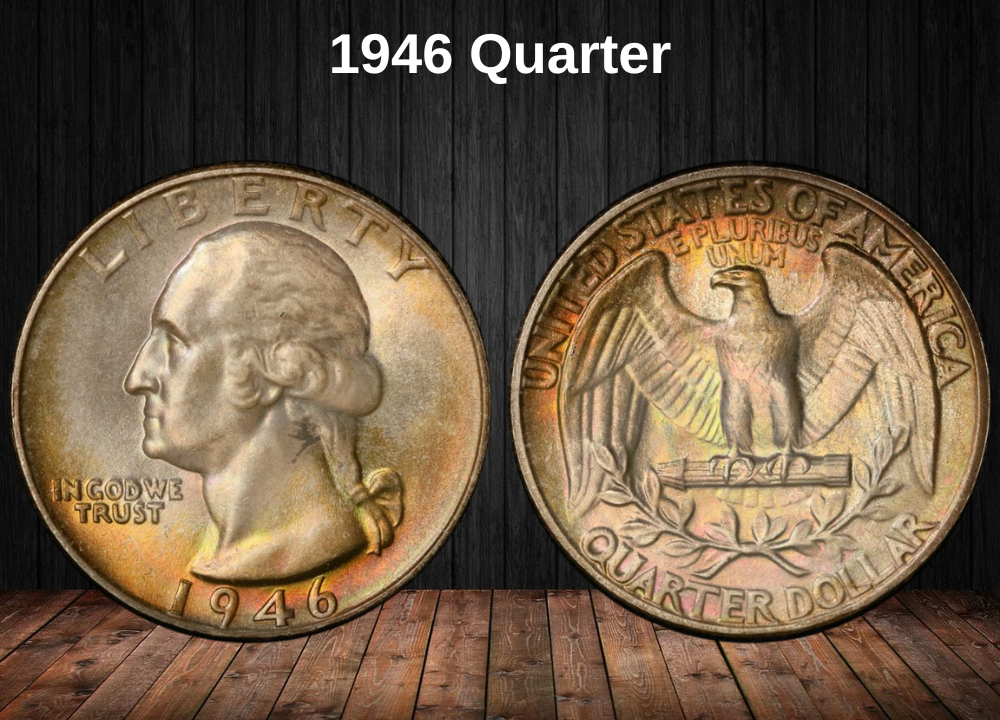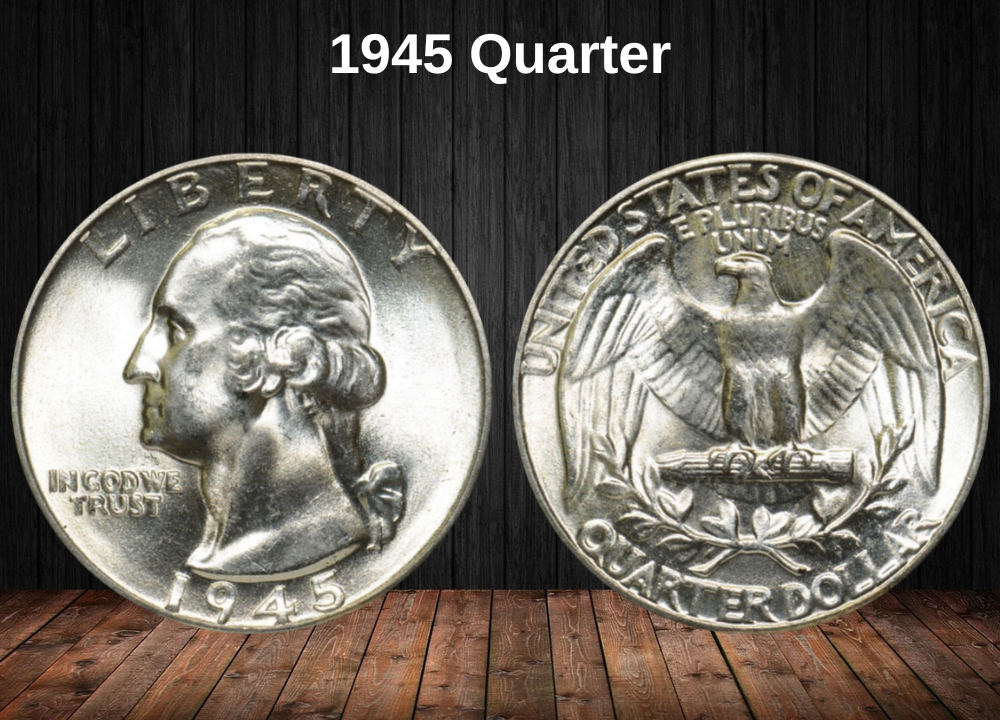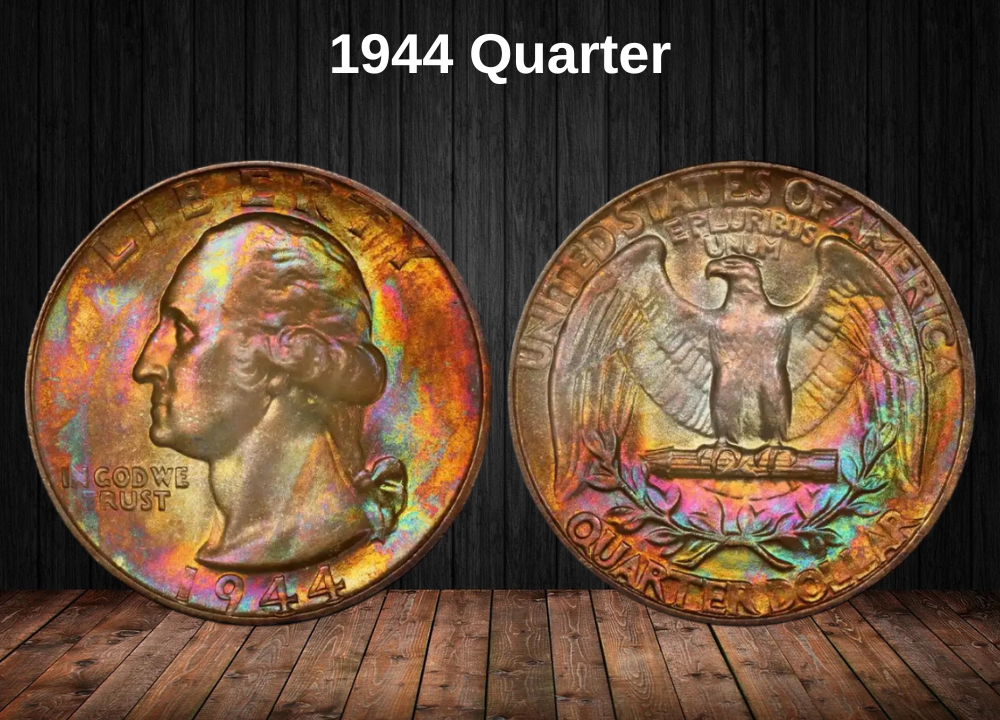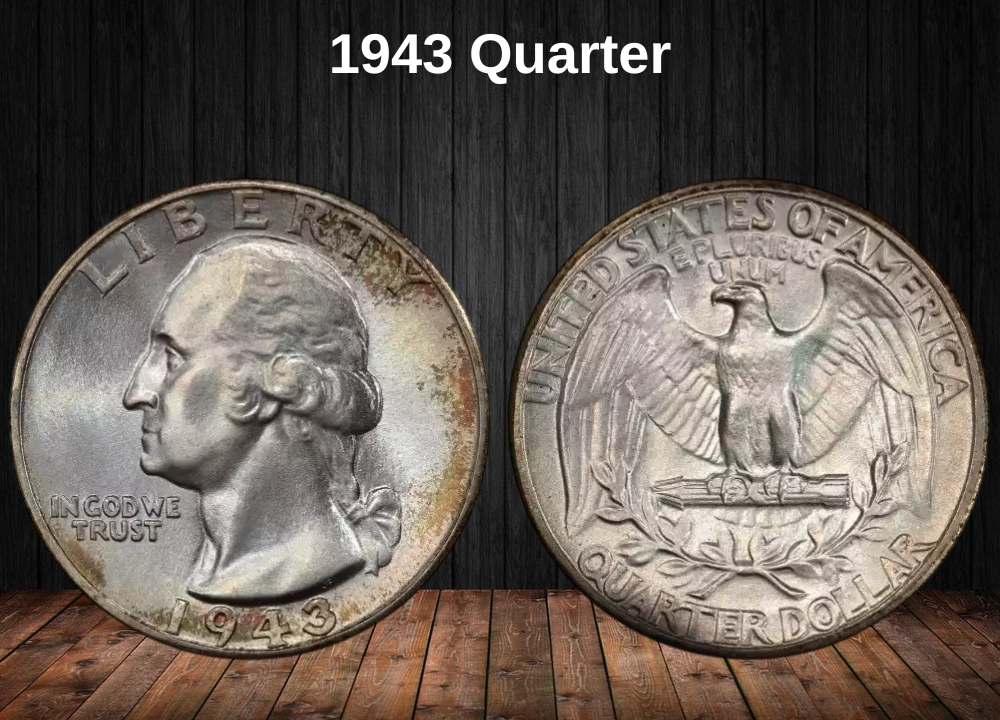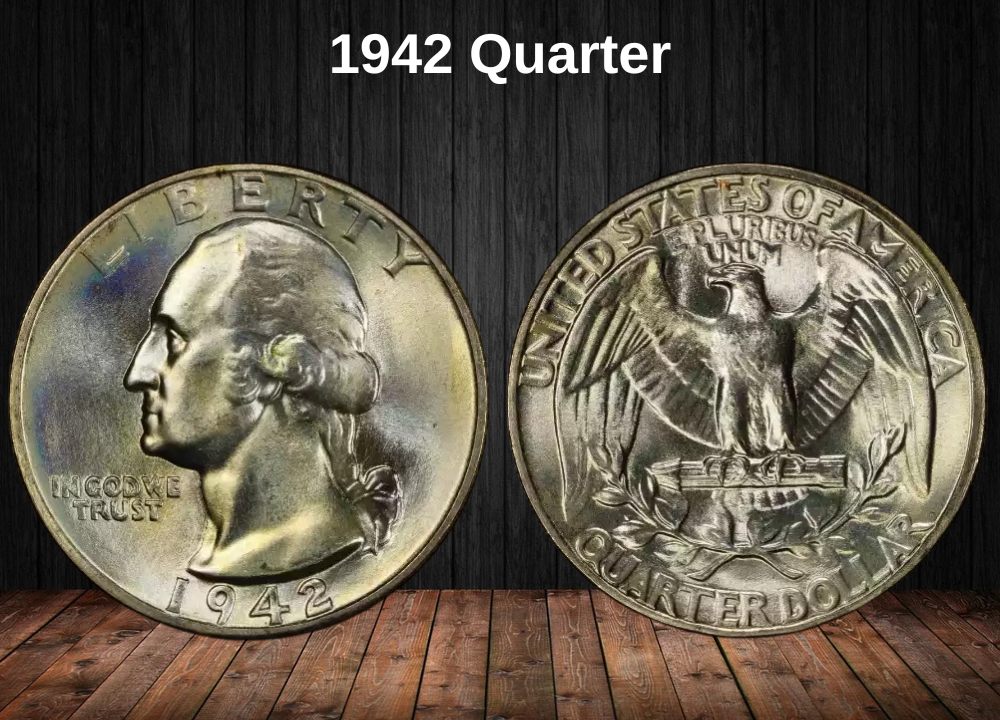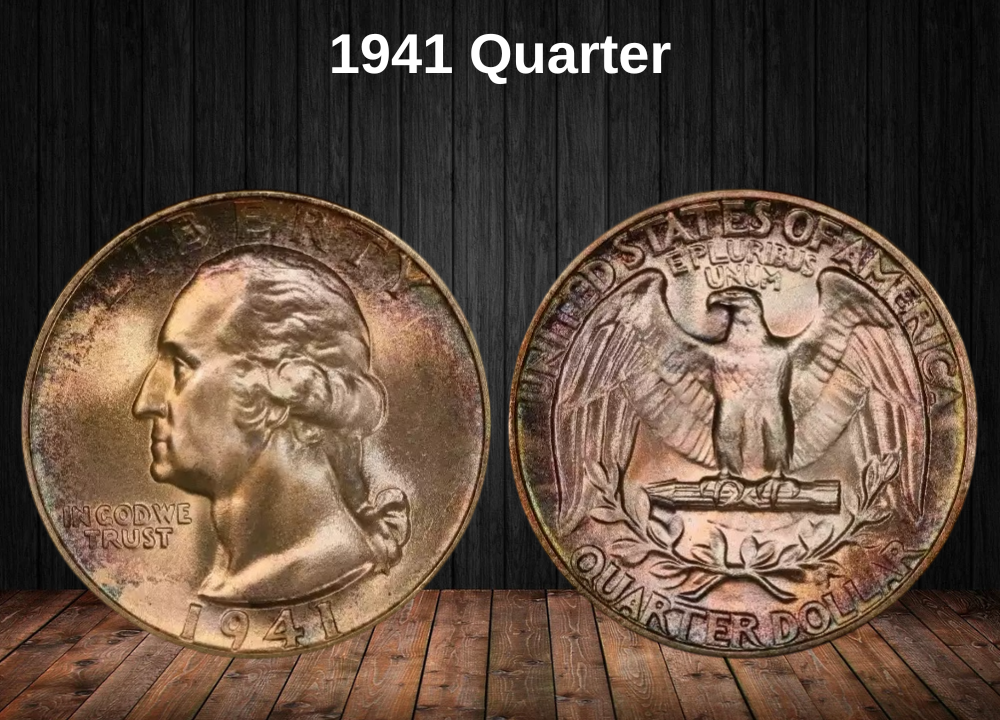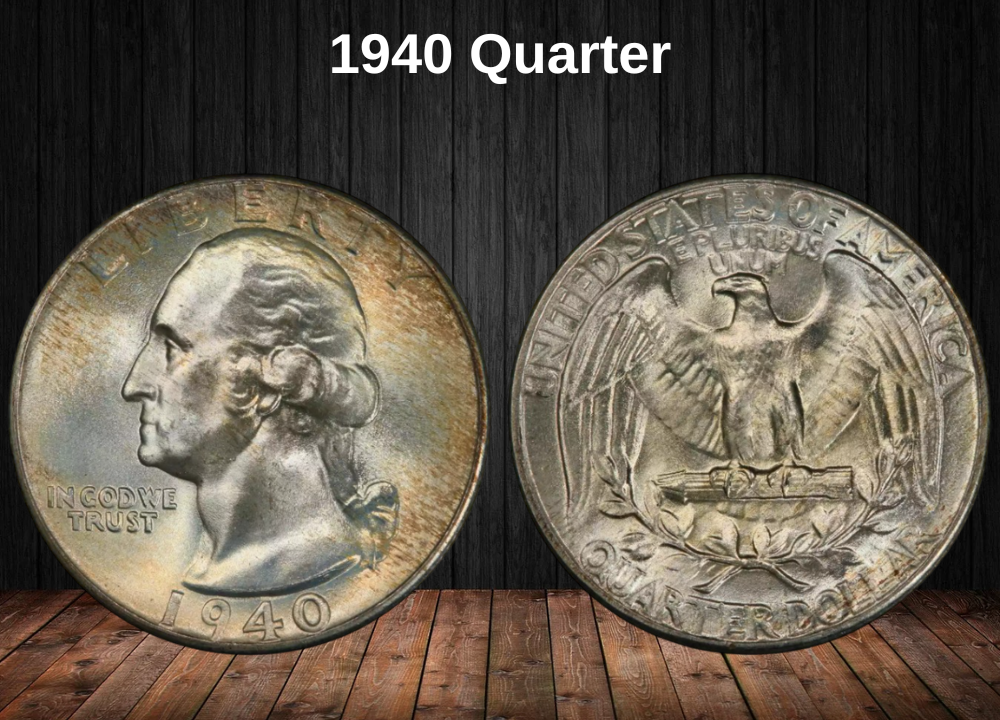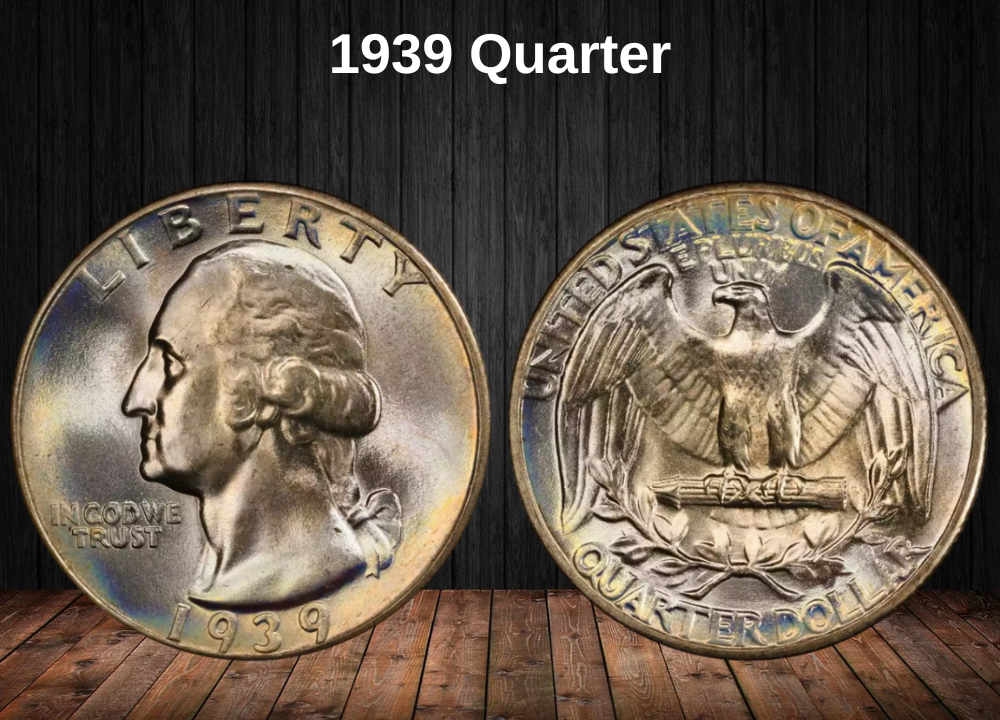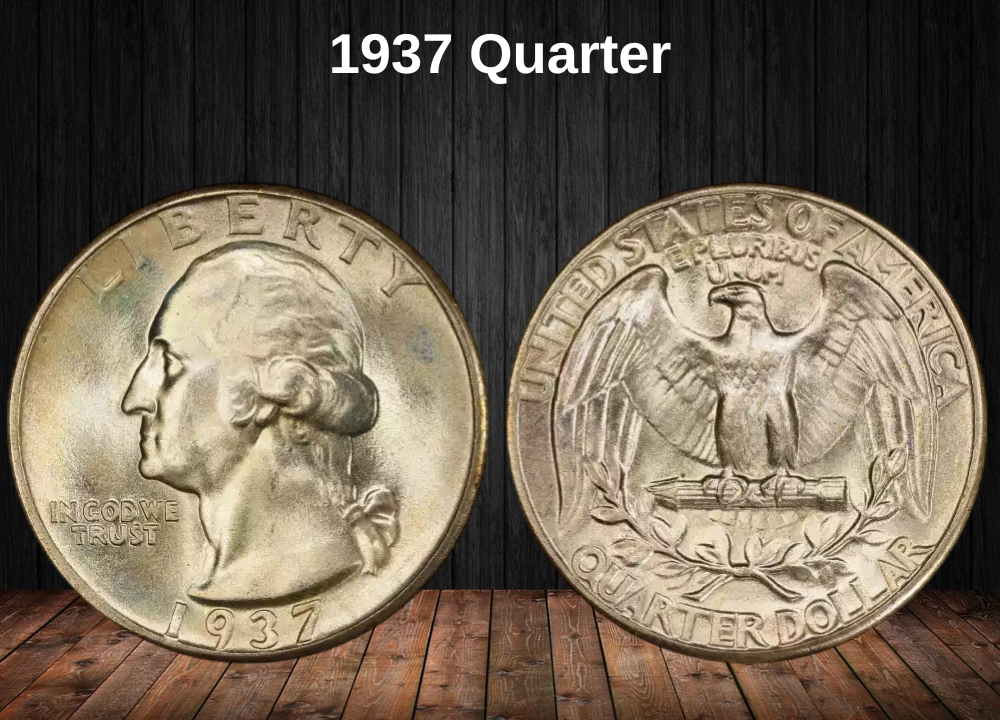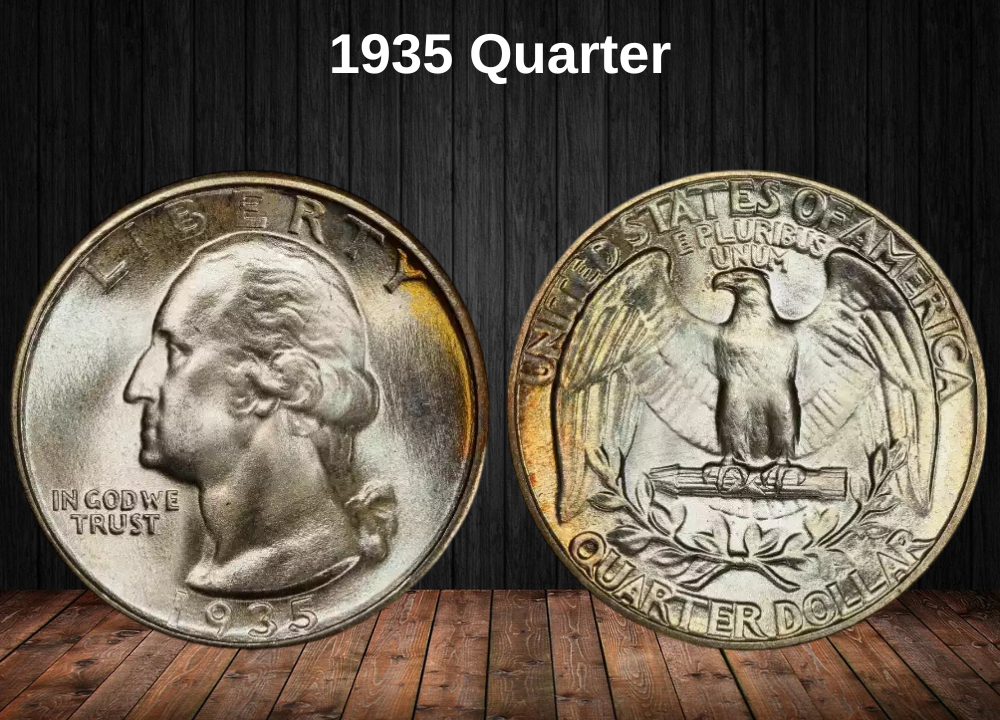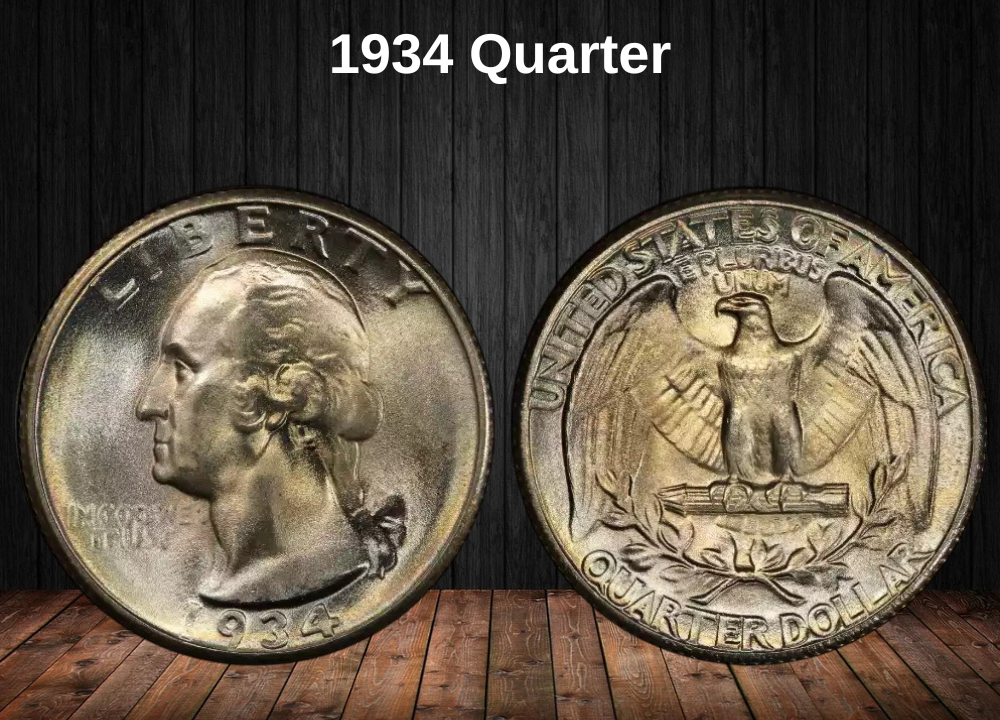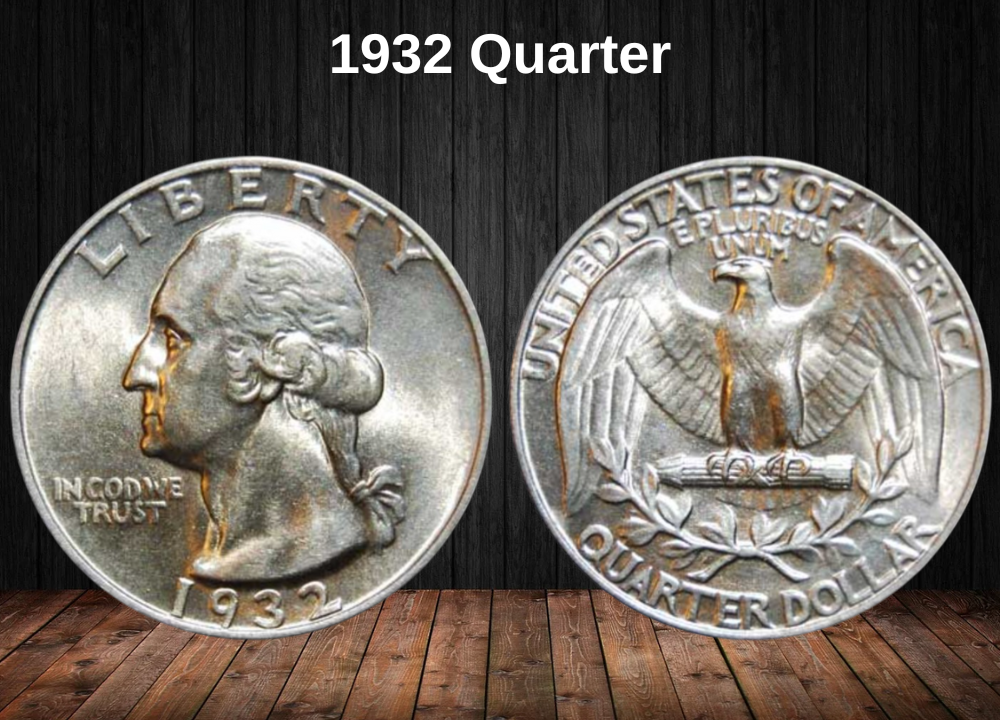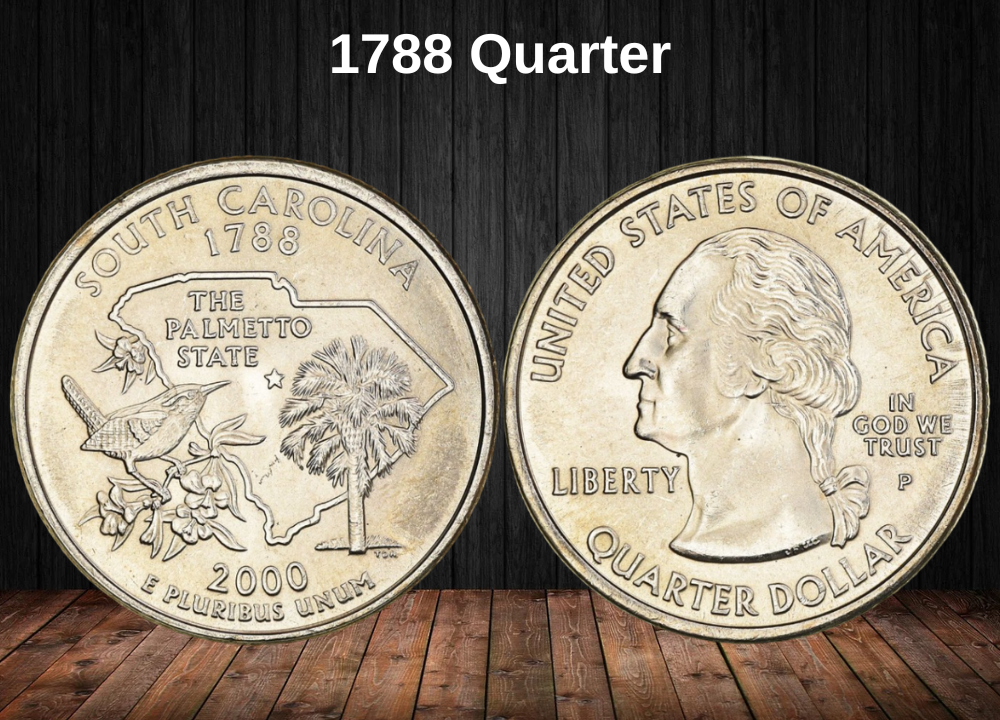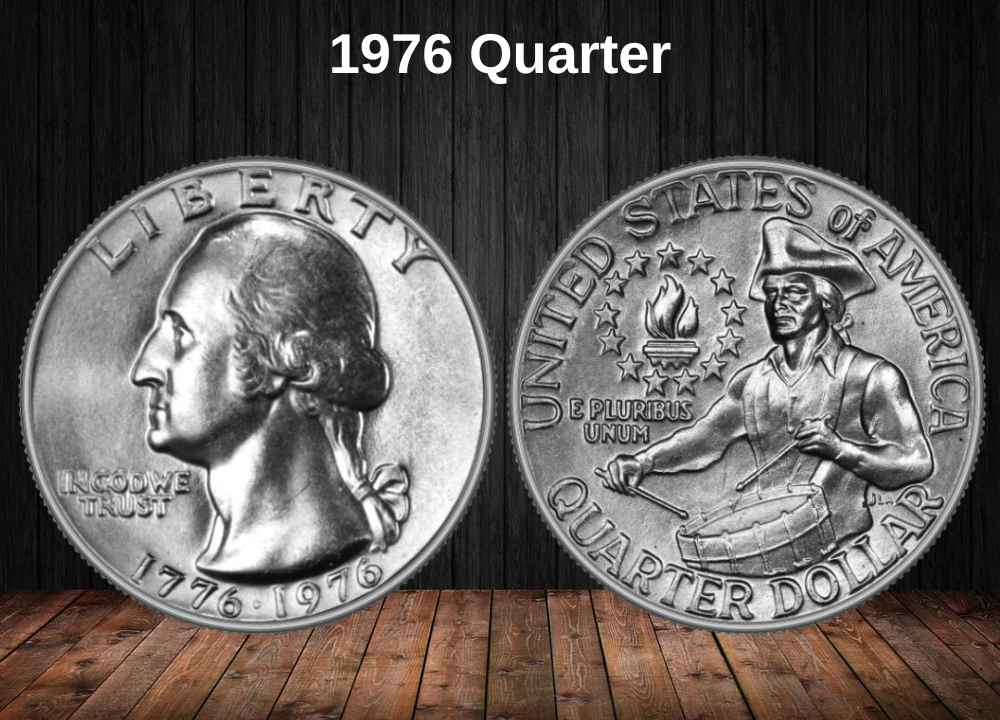If you’re holding a 1964 Washington quarter, you own a true piece of history.
Why? Because 1964 was the final year the U.S. Mint struck quarters in 90% silver for general circulation. Starting in 1965, rising silver prices forced the switch to the copper-nickel clad coins we know today. This shift makes the 1964 issue not only the end of an era, but also one of the most collected modern U.S. coins.
Even well-worn 1964 quarters carry a premium because of their silver content, while certain rare varieties and special strikes can bring thousands of dollars at auction. Whether it’s a coin from circulation, a proof, or one of the extremely rare Special Mint Set (SMS) strikes, understanding the 1964 quarter’s value is key to spotting hidden treasure in your collection.
1964 Quarter Value by Variety
For simplicity, 1964 quarter values are divided into:
- Circulation strikes: Philadelphia (no mint mark) and Denver (“D”)
- Proof issues: Standard Proof, Cameo (CAM), and Deep Cameo (DCAM)
- Special Strikes: The experimental SMS (Special Mint Set) coins
1964 Quarter Value Chart
| Type | Good (G4) | Fine (F12) | About Uncirculated (AU50) | Mint State (MS60–MS63) | Proof (PR65) |
|---|---|---|---|---|---|
| 1964 No Mint Mark (Philadelphia) | $6.00 | $6.17 | $7.00 | $20.83 | — |
| 1964-D (Denver) | $6.00 | $6.17 | $7.00 | $21.00 | — |
| 1964 Proof | — | — | $4.00 | — | $15.78 |
| 1964 CAM Proof | — | — | — | — | $27.00 |
| 1964 DCAM Proof | — | — | — | — | $38.33 |
| 1964 SMS (Special Mint Set) | — | — | — | $6,228.57 | — |
History of the 1964 Quarter
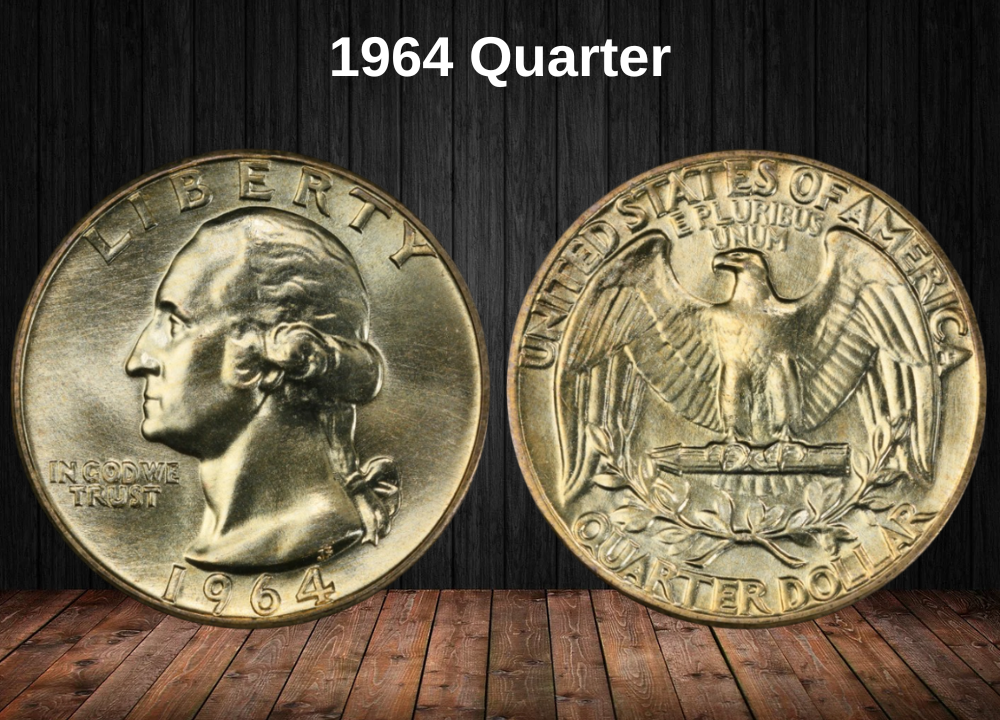
In the earliest days of U.S. coinage, coins were struck from gold and silver, with their metal weight equal to their face value. Over time, however, the Mint discovered ways to produce coins more cheaply, generating revenue through seigniorage—the profit made from the difference between a coin’s production cost and its assigned value.
This system worked until precious metal prices rose sharply, at times leaving the Mint with losses. To protect itself, the government often responded by reducing coin sizes or changing compositions. That exact situation unfolded in the early 1960s, as silver prices climbed and threatened the profitability of circulating coinage.
The solution came with the Coinage Act of 1965, which replaced silver quarters and dimes with a copper-nickel clad composition.
This made 1964 a landmark year, as it marked the final issue of circulating 90% silver quarters. Public hoarding of silver coins was so widespread that the Mint employed a clever tactic: quarters dated 1965 and 1966 were struck with the 1964 date, ensuring silver coins bore only the 1964 year mark. By contrast, any coin actually dated 1965 or 1966 was struck in clad.
Today, 1964 quarters remain highly popular. Many are collected as “junk silver” bullion—a practical store of 90% silver often kept as a hedge against uncertain times. But beyond their bullion value, select high-grade pieces, proof strikes, and error varieties carry strong numismatic premiums, making the 1964 quarter both an investment-grade silver coin and an important historical collectible.
Key Features of the 1964 Silver Quarter
The 1964 Washington quarter carries all the traditional hallmarks of the silver quarter era. Its design, metal content, and placement in U.S. history make it one of the most recognizable and widely collected coins of the 20th century.
Like other Washington quarters, it has a reeded edge (the grooved pattern along the side) and a raised rim or collar, which helps protect the design from wear. The coin’s inscriptions are referred to as legends or mottos, while the images are known as devices.
Obverse of the 1964 Quarter
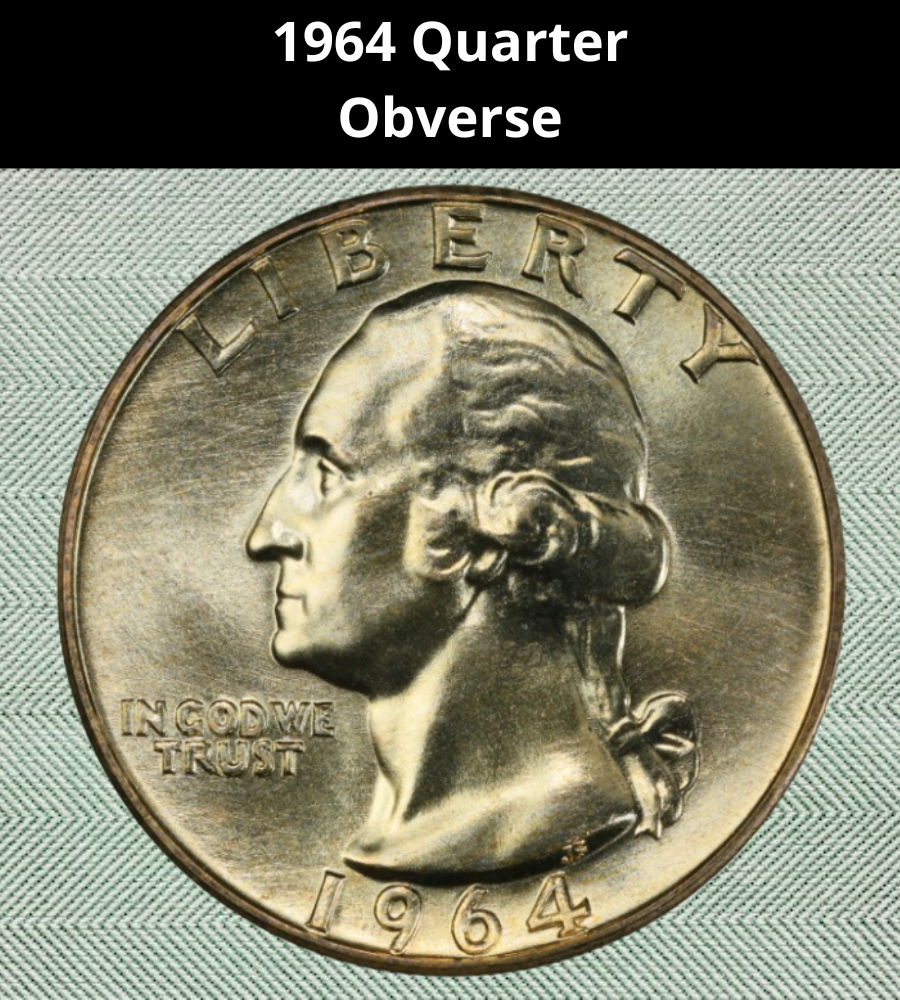
The obverse features George Washington’s left-facing bust, designed by John Flanagan. Above his head is the word “LIBERTY.” To the left, just beneath his chin, is the national motto “IN GOD WE TRUST.”
Flanagan’s initials, “JF,” are engraved at the base of Washington’s neckline. The date 1964 appears centered along the lower rim.
Reverse of the 1964 Quarter
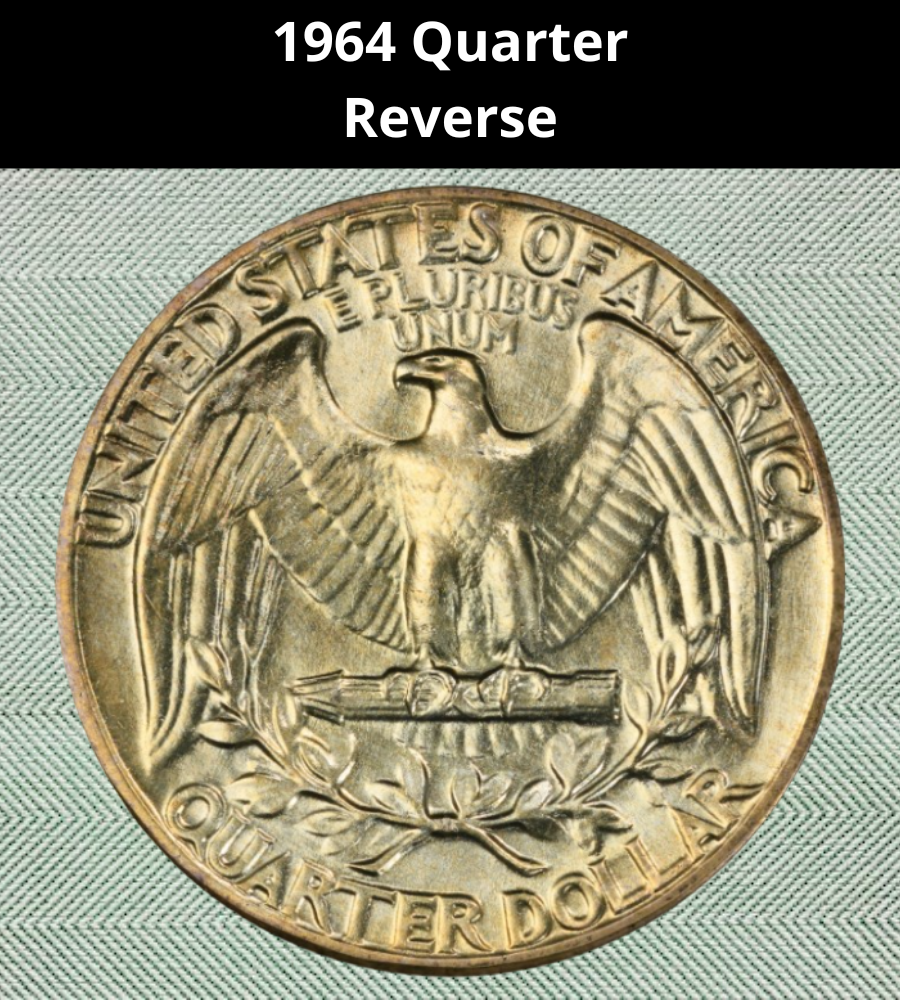
The reverse showcases an American bald eagle with wings spread downward, clutching a bundle of arrows in its talons. Beneath the eagle is an olive branch wreath, symbolizing peace.
A small mint mark, if present, is located beneath the midpoint of the wreath (Denver coins bear a “D,” while Philadelphia issues show no mint mark). Around the rim are the inscriptions “UNITED STATES OF AMERICA” at the top and “QUARTER DOLLAR” at the bottom. The Latin motto “E PLURIBUS UNUM” appears just above the eagle’s head.
Other Specifications of the 1964 Quarter
- Composition: 90% silver, 10% copper
- Weight: 6.25 g (0.2009 troy oz)
- Silver Content: 5.62 g (0.1808 troy oz)
- Diameter: 24.3 mm (0.96 in)
- Thickness: 1.75 mm (0.069 in)
- Edge: Reeded
All 1964 quarters were struck in silver, including those issued in 1965 and 1966 but backdated to 1964 to discourage hoarding. This makes the 1964 quarter the final U.S. circulation quarter struck in 90% silver, closing the chapter on a tradition that dated back to the nation’s earliest coinage.
1964 Quarter Grading
Grading is the key to unlocking the true value of a 1964 Washington quarter. The difference between a well-worn VG-8 example and a nearly flawless MS-67 can amount to thousands of dollars.
U.S. coins are graded on the Sheldon 70-point scale, ranging from Poor (PO-1) to Perfect Mint State (MS-70). Proof coins, struck specifically for collectors, use the same numeric system but are designated PR-60 to PR-70.
1964 Quarter – Grading Guide
| Grade Range | Description | Value Impact |
|---|---|---|
| Good (G4 – VG8) | Heavily worn; design elements visible but flat; legends still readable. | Worth close to silver melt value (~$6–$7). |
| Fine (F12 – VF20) | Moderate wear; LIBERTY and eagle details clearer; legends sharp. | Modest premium above melt. |
| About Uncirculated (AU50 – AU58) | Light friction on high points (Washington’s cheek, eagle’s breast); much luster remains. | Entry-level collectible condition. |
| Mint State (MS60 – MS63) | No wear, though contact marks may be present; partial cartwheel luster. | Solid premiums; affordable Mint State coins. |
| Choice/Gem Mint State (MS64 – MS66) | Strong luster, sharp strike, minimal marks; feather and hair details crisp. | Big jump in value; MS65+ scarce. |
| Superb Mint State (MS67 – MS70) | Nearly flawless surfaces, exceptional eye appeal; extremely rare. | Can exceed several thousand dollars. |
| Proof (PR60 – PR64) | Mirror fields, some haze or marks; no circulation wear. | $10–$20 range. |
| Proof CAM (PR65 – PR68 CAM) | Frosted devices with mirrored fields; strong cameo contrast. | Collectible premiums ($50–$300+). |
| Proof DCAM (PR65 – PR68 DCAM) | Deep cameo contrast; frosted devices stand out dramatically. | Highest premiums; can reach $1,000+. |
| Special Mint Set (SP/SMS) | Experimental finish (not circulation, not proof); satin-like surfaces. | Ultra-rare; can sell for $5,000–$10,000+. |
1964 Quarter Value Guides
1964 No Mint Mark Quarter Value
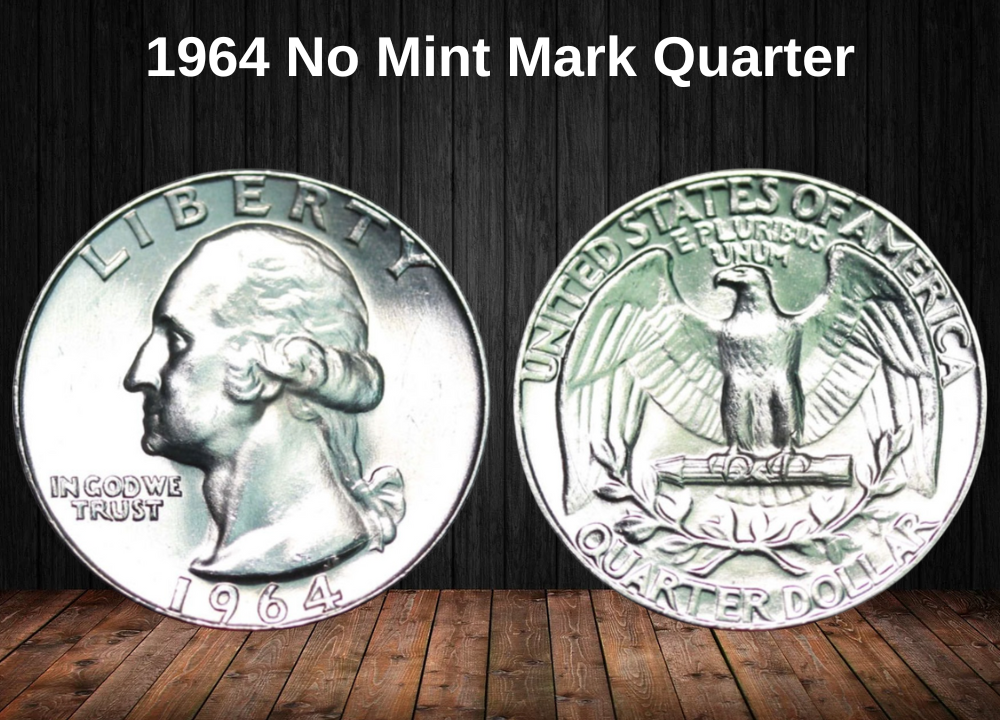
The 1964 Philadelphia Washington quarter (often referred to as Type 1 or Type A) represents the standard issue of the final silver year. One of its key diagnostics is the small gap between the “E” and “S” in “STATES”, along with the larger gap between the “A” in “DOLLAR” and the lowest leaf of the wreath.
The Philadelphia Mint struck an astounding 560,390,585 examples, all without mint marks. This figure includes coins dated 1964 but actually produced in 1965 and 1966, as the Mint continued using the 1964 date to discourage public hoarding of silver quarters.
Despite their huge mintage, these coins are historically significant as the last circulating silver quarters, and high-grade survivors remain popular with both collectors and silver investors.
1964 No Mint Mark Quarter – Price by Grade
(Sheldon 1–70 scale, based on recent auction records)
| Grade (1–70) | Condition Description | Approx. Value |
|---|---|---|
| G4 – VG8 | Well-worn, details flat. | $6 – $7 |
| F12 – VF20 | Moderate wear, inscriptions clear. | $8 – $10 |
| EF40 – AU50 | Light wear, feather and hair details visible. | $12 – $16 |
| MS60 – MS62 | Uncirculated, contact marks present. | $20 – $28 |
| MS63 | Choice Mint State, good luster. | $35 – $50 |
| MS64 | Strong strike, minimal marks. | $55 – $80 |
| MS65 | Gem Mint State, scarcer. | $120 – $180 |
| MS66 | High-grade example, rare. | $400 – $650 |
| MS67 | Superb gem, extremely rare. | $2,000+ |
1964-D Quarter Value
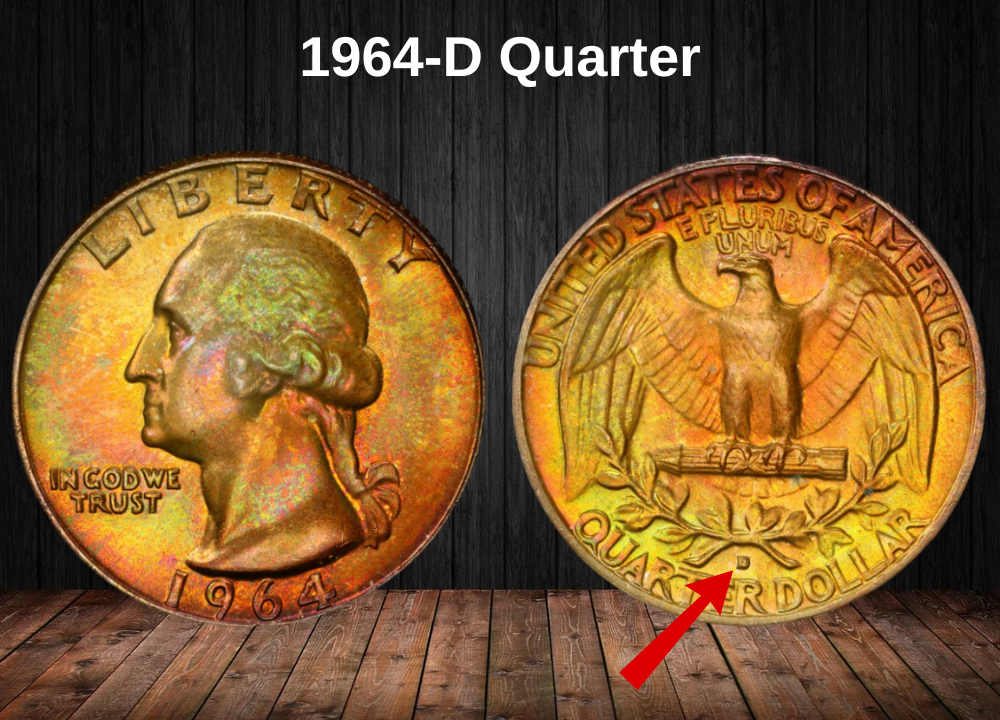
The 1964-D Washington quarter holds the record as the highest-mintage silver quarter in U.S. history, with an astounding 704,135,528 coins struck at the Denver Mint. Only the 1964 Philadelphia issue comes close in sheer numbers, making these coins appear overwhelmingly common at first glance.
However, the story changes dramatically when condition is considered. While an estimated 70 million examples may still exist, only around 11,000 have been certified at MS-65 or higher. At the very top, just two coins have ever graded MS-68, the finest known for this issue.
This creates a fascinating paradox: although the 1964-D is one of the most common quarters ever minted, high-grade survivors are genuinely scarce. Many were produced and handled with little care, leading to striking weaknesses, bag marks, and abrasions. As a result, the jump in value between circulated coins and gem Mint State examples is steep.
1964-D Quarter – Price by Grade
(Sheldon 1–70 scale, based on recent auction records)
| Grade (1–70) | Condition Description | Approx. Value |
|---|---|---|
| G4 – VG8 | Heavy circulation, flat details. | $6 – $7 |
| F12 – VF20 | Moderate wear, lettering clear. | $8 – $10 |
| EF40 – AU50 | Light wear, good detail on hair and eagle feathers. | $12 – $16 |
| MS60 – MS62 | Uncirculated, contact marks visible. | $20 – $30 |
| MS63 | Choice Mint State, some luster. | $35 – $55 |
| MS64 | Sharper strike, fewer abrasions. | $60 – $90 |
| MS65 | Gem quality, scarce for this issue. | $150 – $220 |
| MS66 | Premium gem, difficult to locate. | $450 – $700 |
| MS67 | Nearly flawless, extremely rare. | $3,000+ |
| MS68 | Finest known, only two certified. | Auction level rarity (price varies) |
1964 Proof Quarter Value
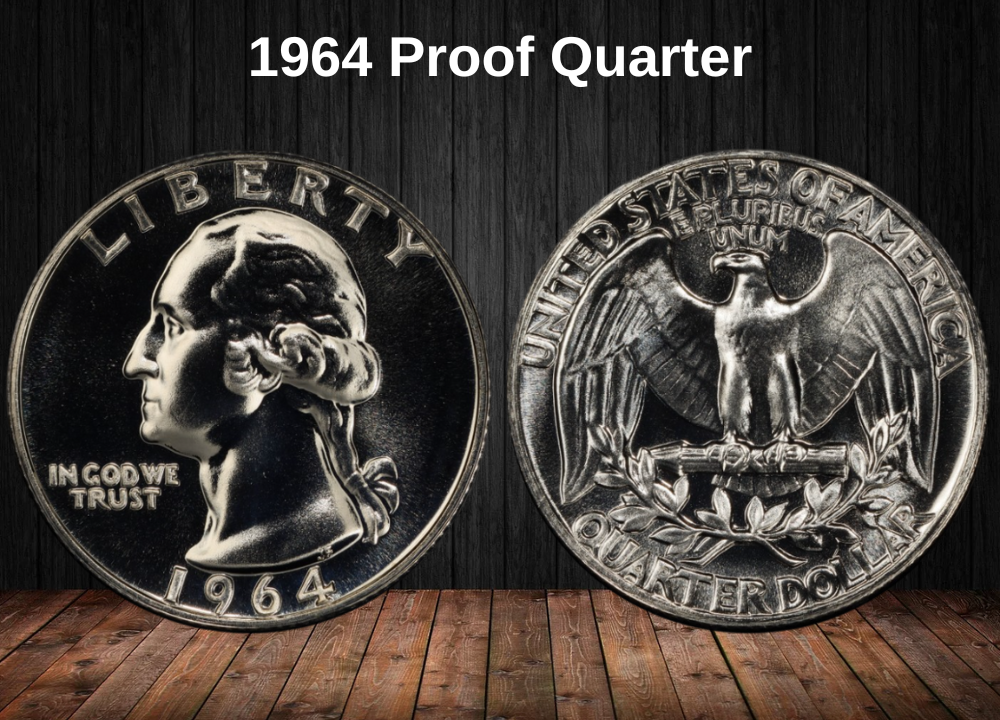
The 1964 Proof Washington quarter marks the last silver proof issue of the series and showcases the Mint’s striking techniques at their peak. These coins were specially prepared with mirror-like fields and frosted devices, giving them exceptional clarity and eye appeal.
The proof process involved multiple steps: planchets were pre-burnished in stainless steel media, dies were polished to a mirror finish, and coins were struck with extra pressure to bring out the finest details. Early strikes often display the strongest Deep Cameo (DCAM) contrast, while subsequent pieces range from Cameo (CAM) to standard proofs as the frosting wore off.
In 1964, proof coinage was still struck in Philadelphia, since the San Francisco Mint had not yet reopened (it resumed proof production in 1968). A total of 3,950,762 proof quarters were issued, making this one of the larger proof mintages of the silver era.
1964 Proof Quarter – Price by Grade
(Sheldon 1–70 scale, based on recent auction records)
| Grade (1–70) | Condition Description | Approx. Value |
|---|---|---|
| PR60 – PR62 | Average proof, marks or haze visible. | $6 – $8 |
| PR63 | Standard proof, reflective surfaces. | $10 – $14 |
| PR64 | Above-average surfaces, light flaws. | $15 – $20 |
| PR65 | Gem Proof, strong mirrors. | $22 – $30 |
| PR66 | Premium proof, crisp detail. | $35 – $55 |
| PR67 | High-end grade, scarce. | $75 – $120 |
| PR68 | Exceptional quality, very rare. | $250 – $400 |
| PR69 | Nearly perfect, ultra-rare. | $800 – $1,200+ |
Rare 1964 Quarter Error List
1. 1964-D Repunched Mint Mark Errors (RPM FS-501 and FS-502)
In 1964, mint marks were still applied to dies by hand—a process that often required multiple punches. When the punches did not align perfectly, the result was a Repunched Mint Mark (RPM), where traces of two or more impressions of the same mint mark can be seen.
On the 1964-D Washington quarter, two RPM varieties are officially recognized:
- FS-501 – shows the secondary “D” shifted to the north of the primary punch.
- FS-502 – displays the repunch in a different direction, creating thicker edges and visible shadowing around the mint mark.
Under magnification, the repunched mint mark appears as doubled edges, extra thickness, or faint outlines around the “D.” While less dramatic than major doubled die errors, these RPM varieties have strong appeal to specialty collectors of mintmark varieties.
Premiums are modest in circulated grades, but in Gem Mint State (MS65 and higher), they become significantly more valuable, since both the error and high grade are scarce in combination.
1964-D RPM FS-501 / FS-502 Quarter – Price by Grade
(Sheldon 1–70 scale, based on recent auction records)
| Grade (1–70) | Condition Description | Approx. Value |
|---|---|---|
| G4 – VG8 | Heavy wear, mint mark doubling faint. | $10 – $18 |
| F12 – VF20 | Moderate wear, RPM visible with magnification. | $25 – $45 |
| EF40 – AU50 | Light wear, doubling sharper. | $60 – $100 |
| MS60 – MS62 | Uncirculated, noticeable repunch. | $140 – $220 |
| MS63 | Choice Mint State, luster intact. | $280 – $400 |
| MS64 | Strong strike, RPM bold. | $500 – $750 |
| MS65 | Gem quality, scarce with clear RPM. | $1,000 – $1,400 |
| MS66 | Premium gem, extremely rare. | $2,500+ |
2. 1964 Doubled Die Obverse Errors (DDO FS-101)
The 1964 Doubled Die Obverse (DDO FS-101) is one of the most sought-after error varieties of the last silver quarter year. This error occurs during die production, when the hub impresses the die more than once with slight misalignment, producing a doubled image that is faithfully struck on every coin from that die.
On the 1964 DDO, collectors should look closely at the inscriptions:
- “LIBERTY”
- “IN GOD WE TRUST”
The letters may appear thick, distorted, or show clear separation lines between the doubled impressions. Unlike strike doubling, which is random and affects only individual coins, true doubled dies like FS-101 are consistent across an entire die run, making authentication easier.
Both the Philadelphia and Denver Mints produced DDO varieties in 1964, giving collectors multiple opportunities to hunt for this dramatic error. As always, coins with stronger visible doubling command significantly higher premiums, especially in Mint State.
1964 DDO FS-101 Quarter – Price by Grade
(Sheldon 1–70 scale, based on recent auction results)
| Grade (1–70) | Condition Description | Approx. Value |
|---|---|---|
| G4 – VG8 | Heavily worn, doubling faint but present. | $20 – $35 |
| F12 – VF20 | Moderate wear, doubling visible. | $50 – $90 |
| EF40 – AU50 | Light wear, inscriptions show clear separation. | $120 – $200 |
| MS60 – MS62 | Uncirculated, doubling noticeable. | $300 – $450 |
| MS63 | Choice Mint State, good luster. | $500 – $750 |
| MS64 | Strong strike, bold doubling. | $850 – $1,200 |
| MS65 | Gem Mint State, scarce with sharp doubling. | $1,800 – $2,500 |
| MS66 | Premium gem, extremely rare. | $4,000+ |
3. 1964 Doubled Die Reverse Errors (DDR FS-801 to FS-804)
The 1964 Doubled Die Reverse (DDR) varieties are the reverse counterparts to the doubled die obverse errors, affecting the reverse die during hubbing. Unusually, the 1964 quarter produced four distinct DDR varieties (FS-801 through FS-804), making it a standout year for reverse errors in the Washington series.
Unlike bold obverse doubling, these DDRs are often subtle and tricky to detect. Doubling generally appears on:
- Feather details in the eagle’s wings and breast
- Portions of the inscriptions, particularly “UNITED STATES OF AMERICA” and “QUARTER DOLLAR”
Collectors typically require strong magnification and proper lighting to confirm the variety. Among the group, FS-801 is the most dramatic and commands the highest premiums. The other varieties (FS-802 through FS-804) show lighter doubling, but they remain collectible and often slip through unnoticed in dealer inventories, rewarding sharp-eyed collectors.
1964 DDR (FS-801 to FS-804) Quarter – Price by Grade
(Sheldon 1–70 scale, based on latest auction records)
| Grade (1–70) | Condition Description | Approx. Value |
|---|---|---|
| G4 – VG8 | Heavily worn, doubling faint. | $15 – $25 |
| F12 – VF20 | Moderate wear, subtle doubling visible. | $40 – $75 |
| EF40 – AU50 | Light wear, feather doubling clearer. | $100 – $180 |
| MS60 – MS62 | Uncirculated, doubling visible under magnification. | $220 – $350 |
| MS63 | Choice Mint State, luster intact. | $400 – $600 |
| MS64 | Sharper strike, bold DDR (esp. FS-801). | $750 – $1,000 |
| MS65 | Gem Mint State, scarce with strong doubling. | $1,500 – $2,200 |
| MS66 | Premium gem, extremely rare. | $3,500+ |
4. 1964-D Quarter with 1965 Reverse
During the turbulent transition from 90% silver coinage to clad copper-nickel quarters, the U.S. Mint experienced a number of die mix-ups. One of the most fascinating results is the 1964-D quarter struck with a 1965 reverse die, creating a transitional mule variety.
The diagnostic feature lies in the eagle’s breast feathers:
- The 1964 reverse shows softer, less detailed feathering.
- The 1965 reverse introduced sharper, more defined feather detail.
This mix-up likely occurred when mint workers mistakenly paired a 1964-dated obverse die with a new 1965 reverse die during the hectic production period.
While not as dramatic in value as some major doubled dies or repunched mint marks, this variety captures the exact moment of America’s coinage shift from silver to clad. For collectors, it represents a tangible piece of numismatic history.
Authentication requires side-by-side comparison with known examples, since the differences, though consistent, can be subtle to the untrained eye.
1964-D Quarter with 1965 Reverse – Price by Grade
(Sheldon 1–70 scale, based on recent auction records)
| Grade (1–70) | Condition Description | Approx. Value |
|---|---|---|
| F12 – VF20 | Moderate wear, reverse details identifiable. | $75 – $150 |
| EF40 – AU50 | Light wear, sharper feather details visible. | $250 – $400 |
| MS60 – MS62 | Uncirculated, mix-up clear. | $600 – $850 |
| MS63 | Choice Mint State, strong strike. | $1,000 – $1,400 |
| MS64 | Sharper example, premium appeal. | $1,800 – $2,500 |
| MS65 | Gem Mint State, rare. | $3,500 – $5,000 |
| MS66 | Premium gem, extremely rare. | $7,500+ |
Where to Sell Your Quarter Coin?
Now that you know the value of your quarter, the next step is deciding where to sell it. There are several trusted options—both online and in person—that can help you get the best price depending on your coin’s rarity and condition.
To see the full list of recommended places, along with their advantages and disadvantages, check our complete guide on where to sell your quarter coins.
FAQs About the 1964 Quarter
1) What are the specifications of the 1964 quarter?
- Composition: 90% silver, 10% copper
- Weight: 6.25 g (0.2000 troy oz); ASW: 0.1808 troy oz
- Diameter: 24.3 mm
- Edge: Reeded
2) Where was the 1964 quarter minted?
- Philadelphia (no mintmark): 560,390,585
- Denver (“D” mintmark on reverse): 704,135,528
- Proofs (Philadelphia only): 3,950,762
Combined, over 1.26 billion pieces were produced, making 1964 the single highest mintage year of any silver quarter.
3) Why is the 1964 quarter historically significant?
It was the last regular-issue U.S. quarter struck in 90% silver, before the Mint switched to clad copper-nickel coinage in 1965 due to rising silver prices and widespread hoarding.
4) Are 1964 quarters rare?
- No, in circulated grades they are very common.
- Yes, in top grades (MS-67 and above), especially with strong luster and minimal marks.
- Proof Cameo/Deep Cameo quarters are conditionally scarce and bring premiums.
5) What is the value of a 1964 quarter?
- Silver melt baseline: ~$4–5 (varies with silver spot).
- Circulated: $6–10.
- MS-65: $15–25.
- MS-67: $250–500+.
- Proof PR-65: $15–25.
- Proof PR-68 DCAM: $1,000+.
6) Are there notable varieties or errors?
- 1964-D DDO and DDR varieties exist and are collectible.
- 1964-D RPMs (Repunched Mintmarks) are popular with specialists.
- Transitional errors (1965-dated silver planchets or 1964-dated clad planchets) are extremely rare and valuable, worth thousands.
- Struck-throughs, off-centers, and other mint errors are also found.
7) How can you identify a Proof 1964 quarter?
- Philadelphia-only issue.
- Features mirror-like fields and often frosted design elements.
- Stronger, squared rims compared to business strikes.
- Deep Cameo pieces are particularly prized.
8) Why do collectors pursue 1964 quarters?
- Last year of the 90% silver circulation quarters.
- Huge historical importance during the 1960s coin shortage.
- Varieties (DDOs, RPMs, transitional errors) add depth.
- Still affordable for beginners but with advanced material for specialists.
9) Should I clean a 1964 quarter?
Never. Cleaning erases natural surfaces, kills eye appeal, and slashes value. Original luster or toning is always preferred.
10) Is the 1964 quarter a good investment?
Yes, especially in:
- MS-67+ certified coins
- Proofs with strong Cameo/DCAM contrast
- Major error or transitional planchet examples
These remain in steady demand and are cornerstones of 20th-century U.S. coin collecting.

